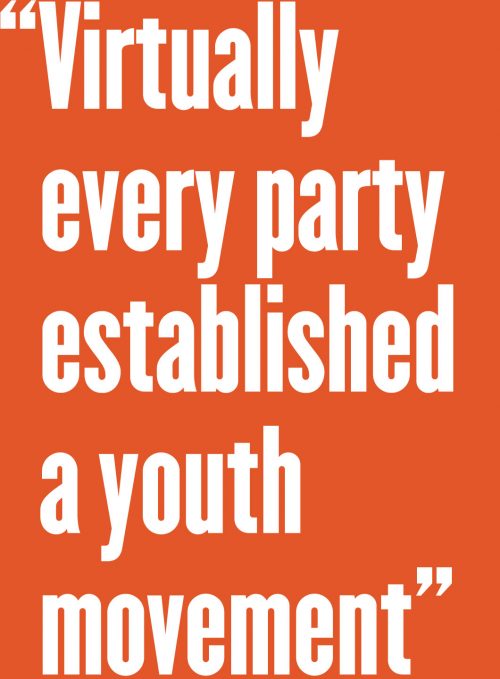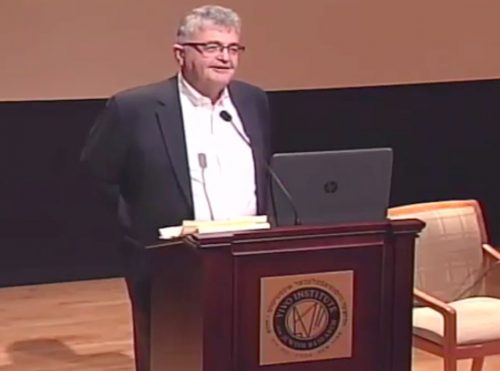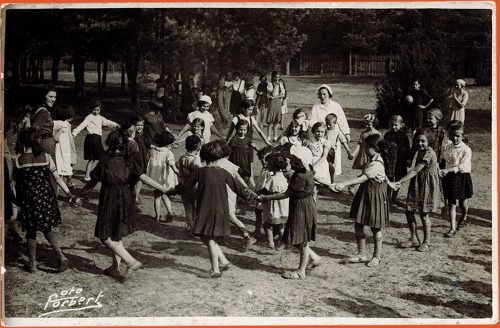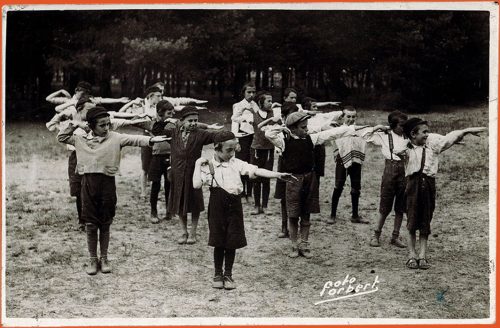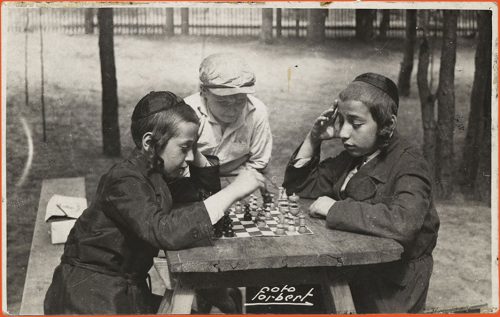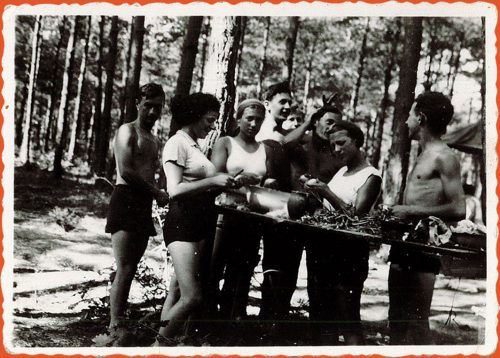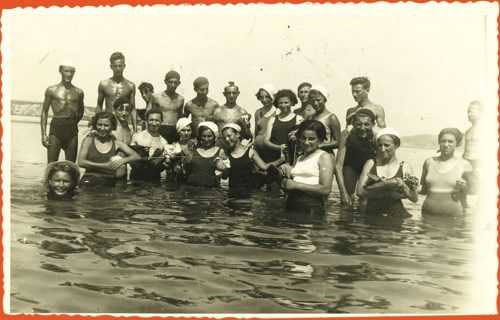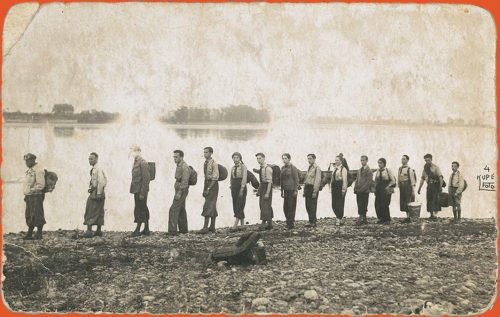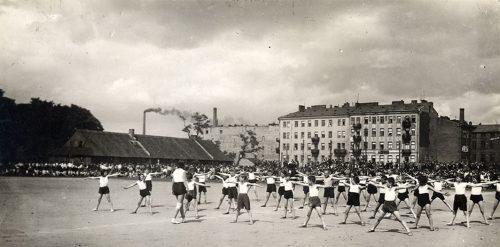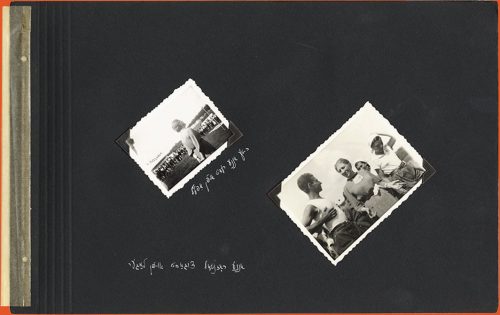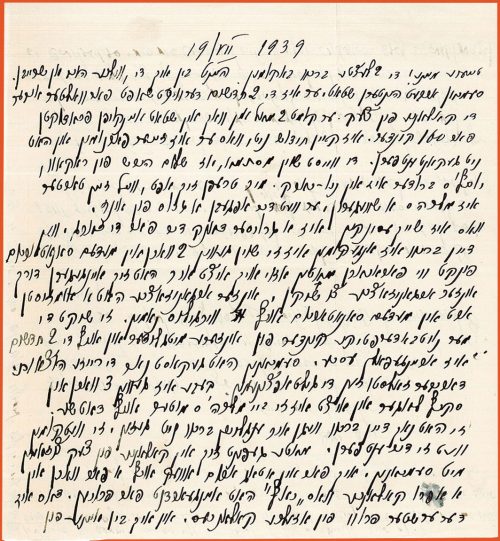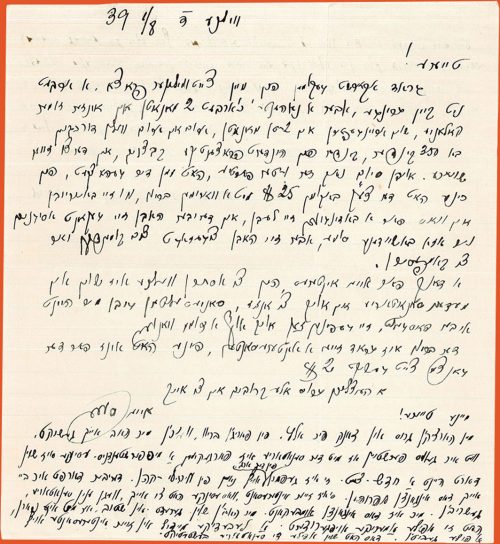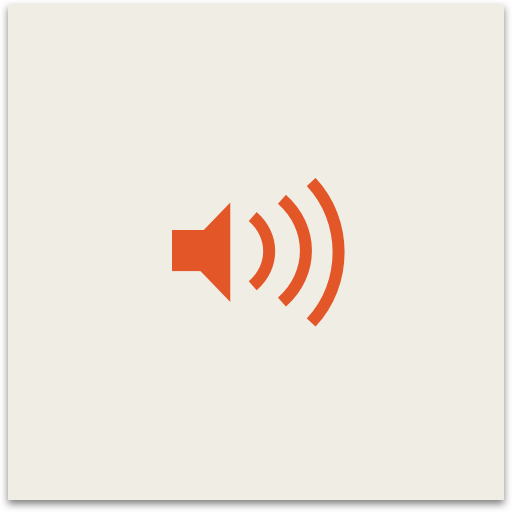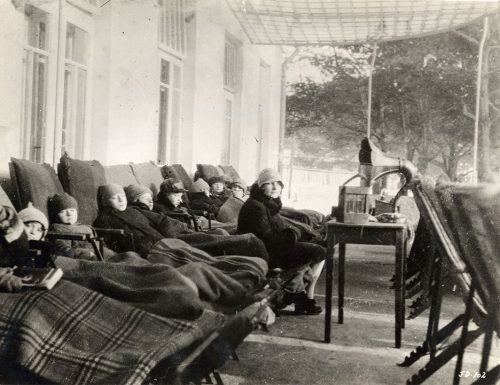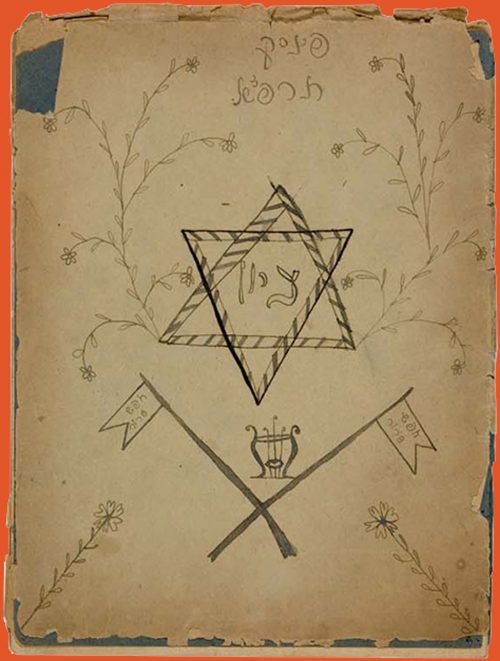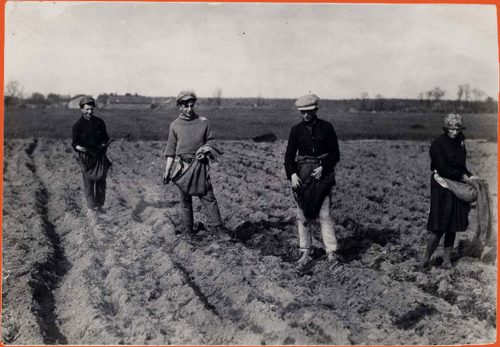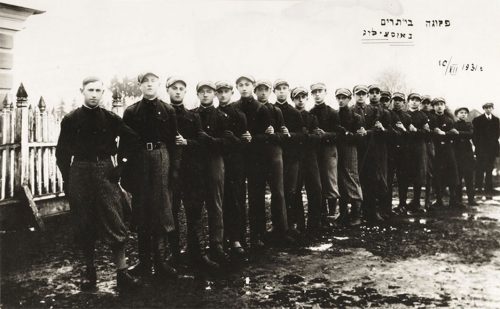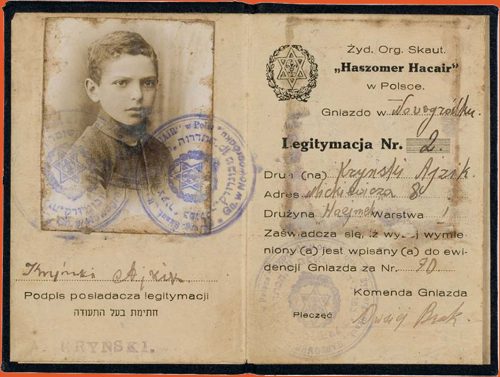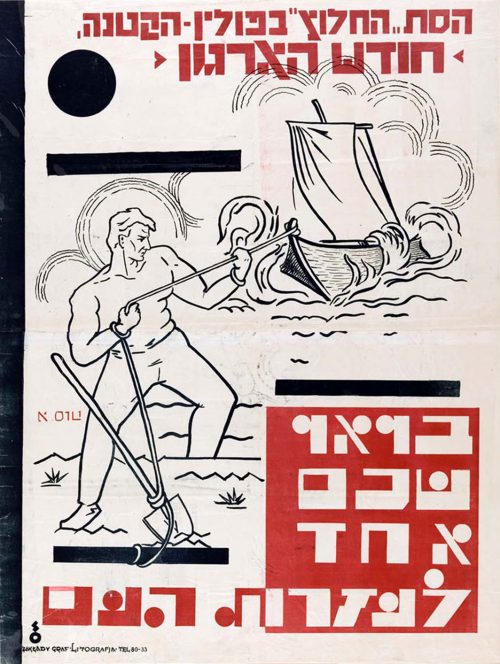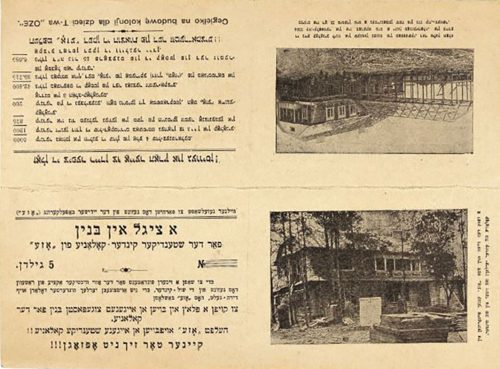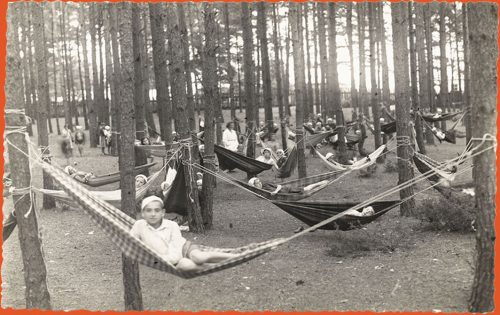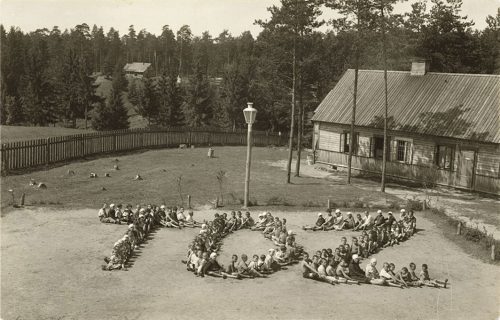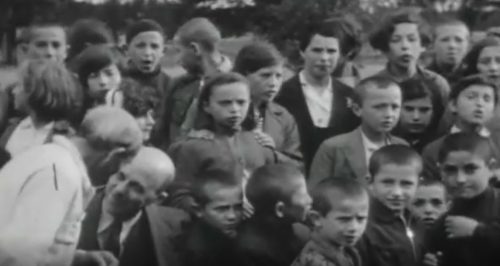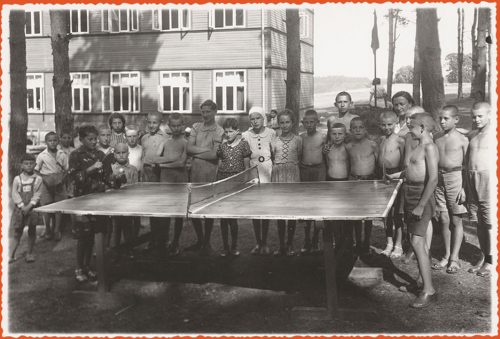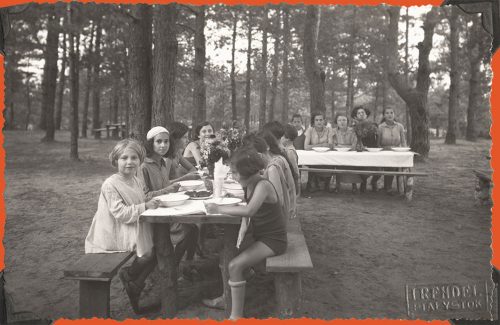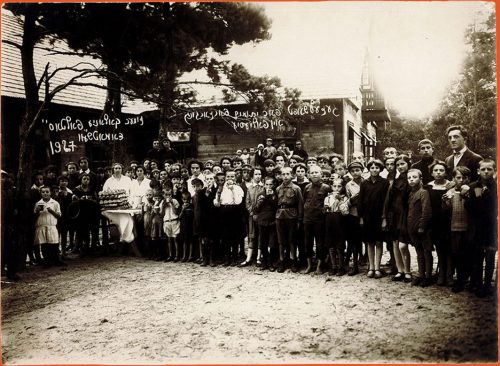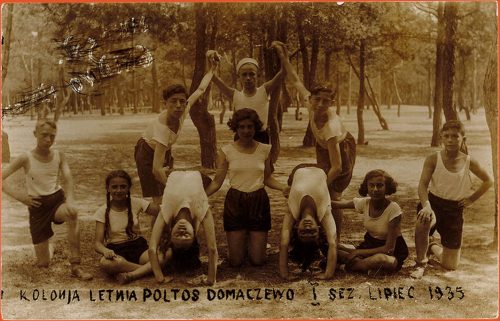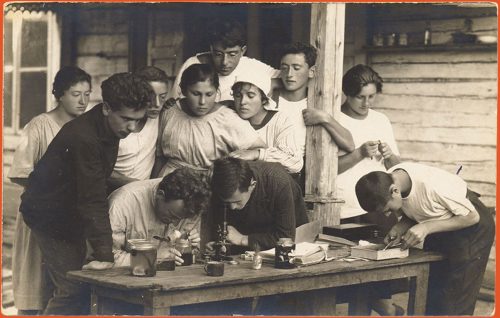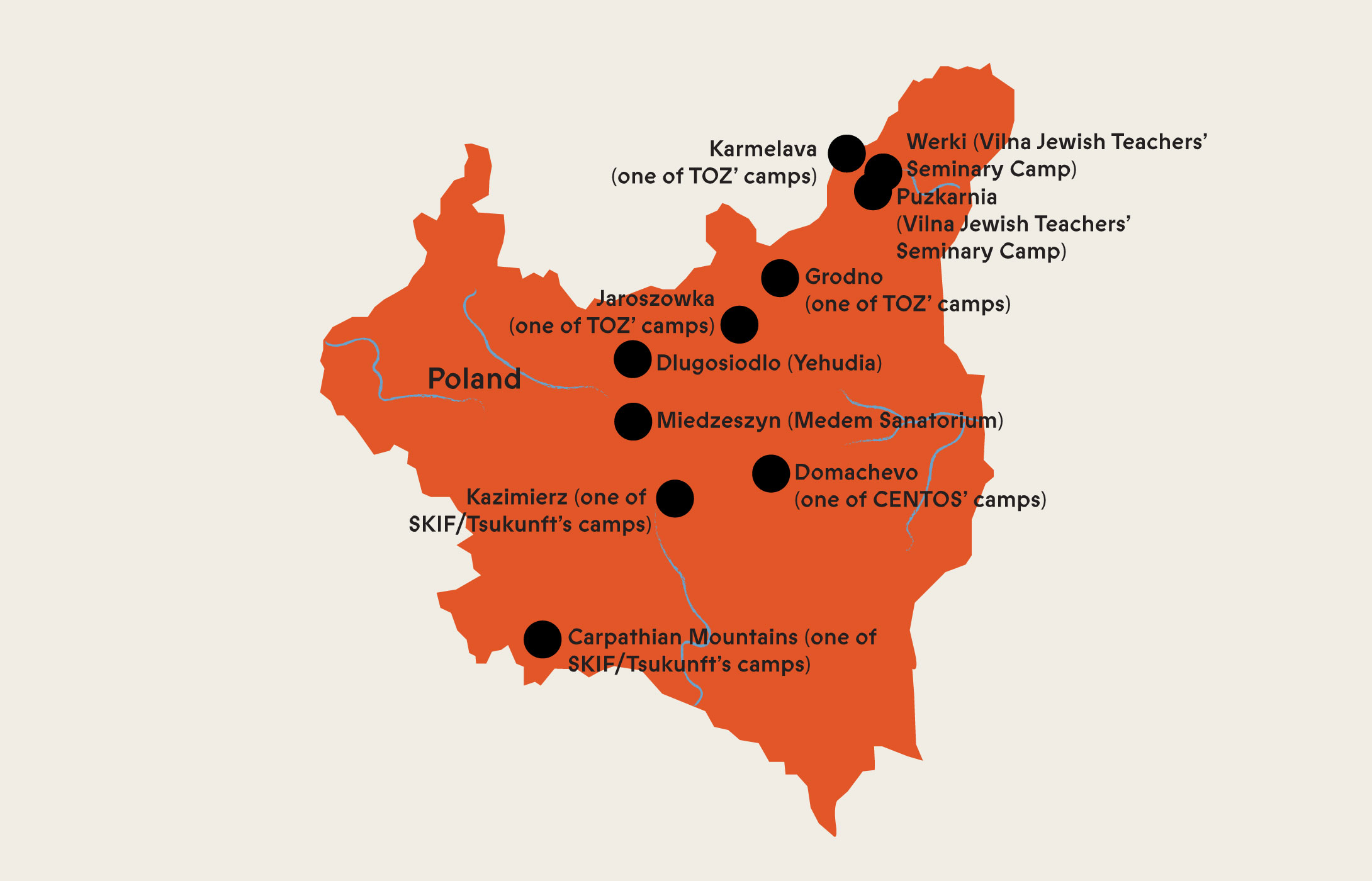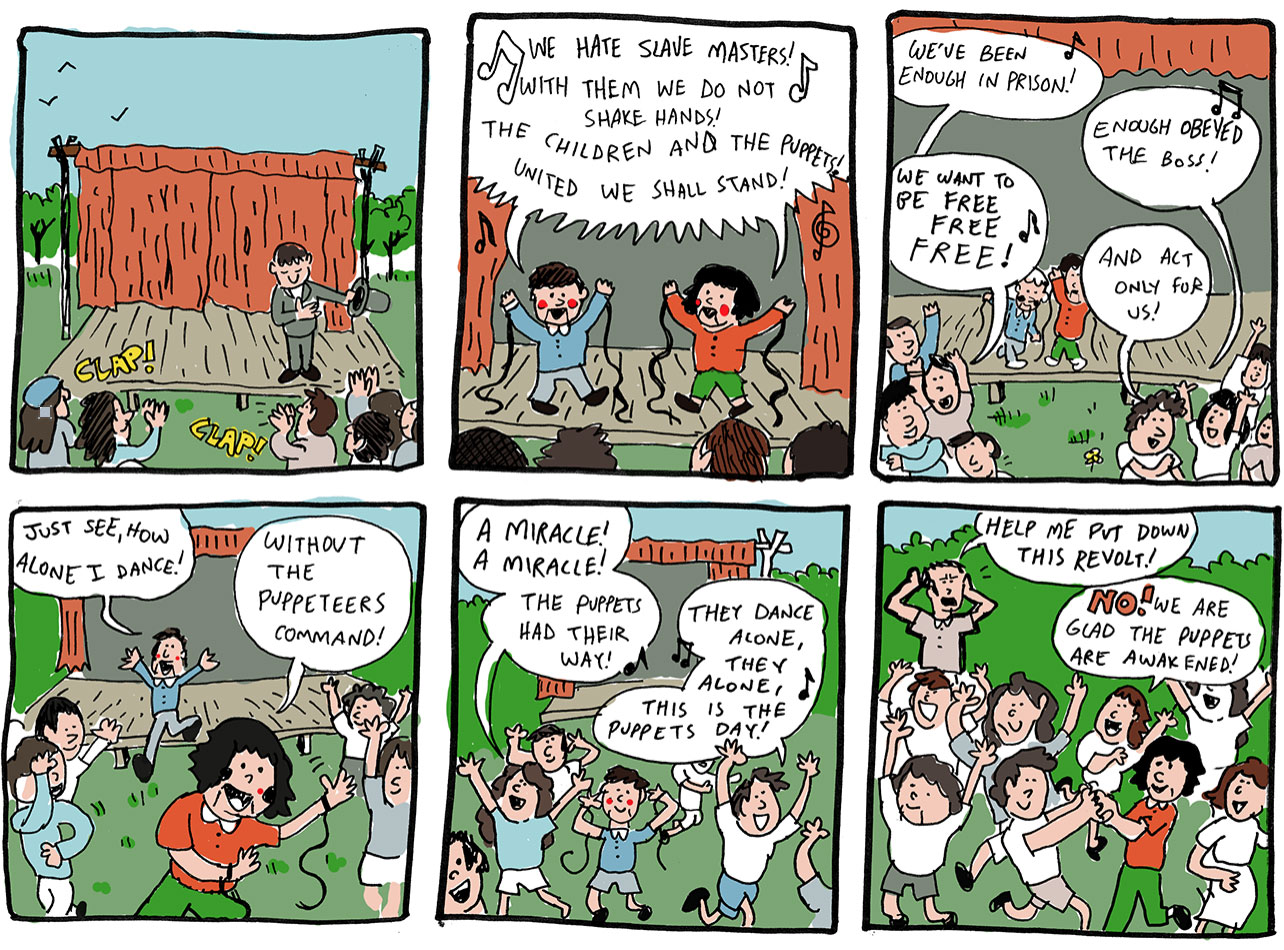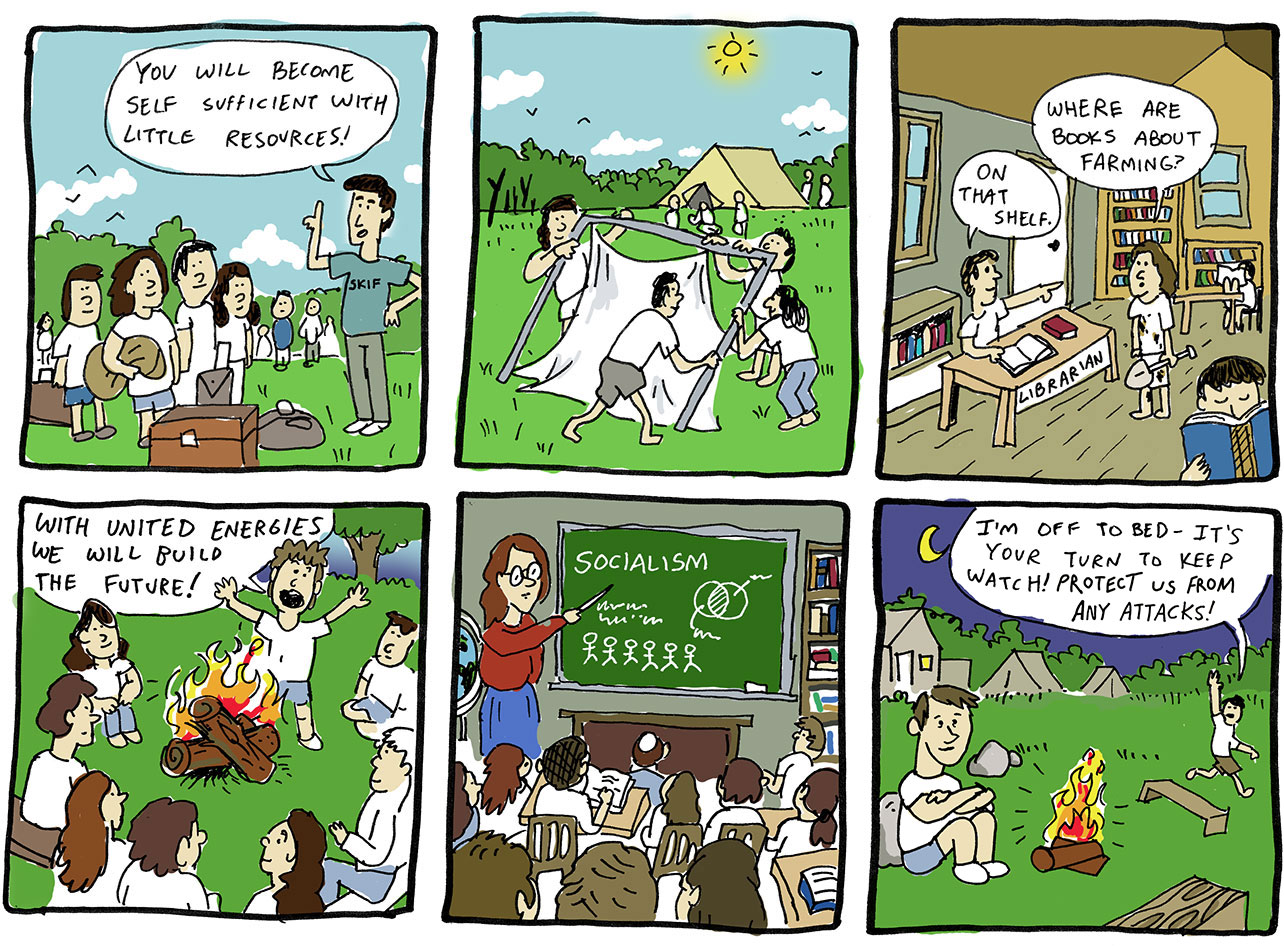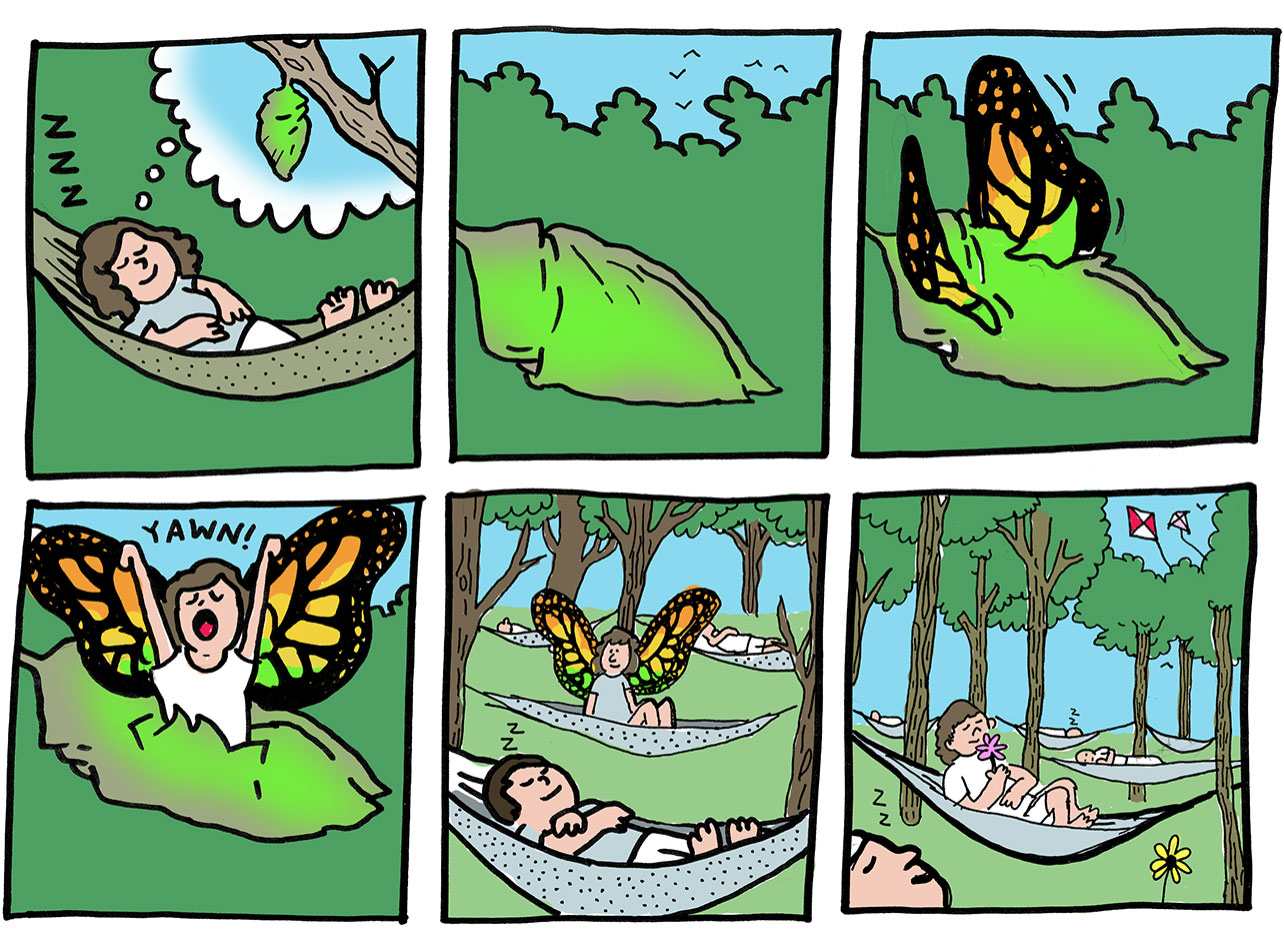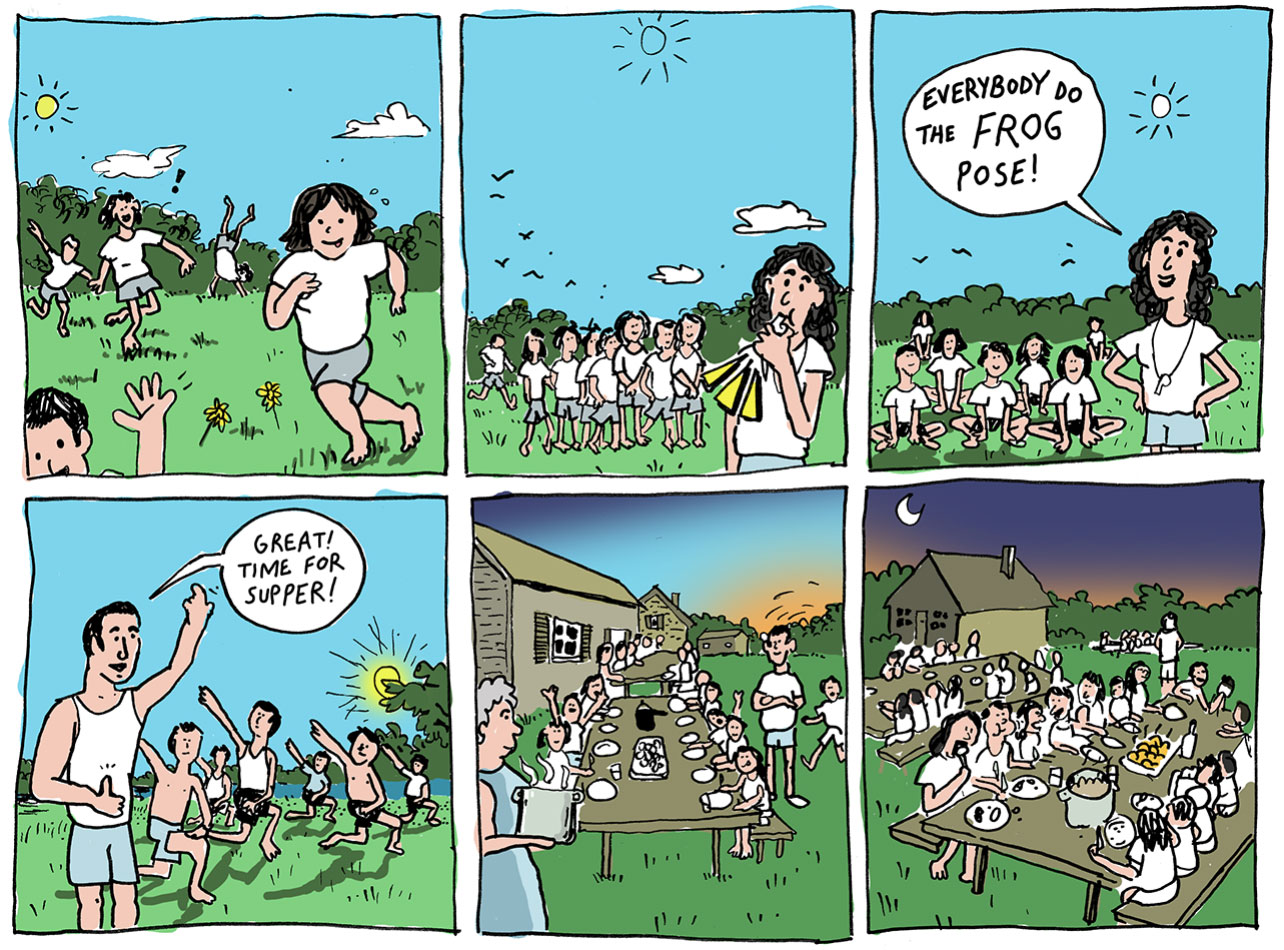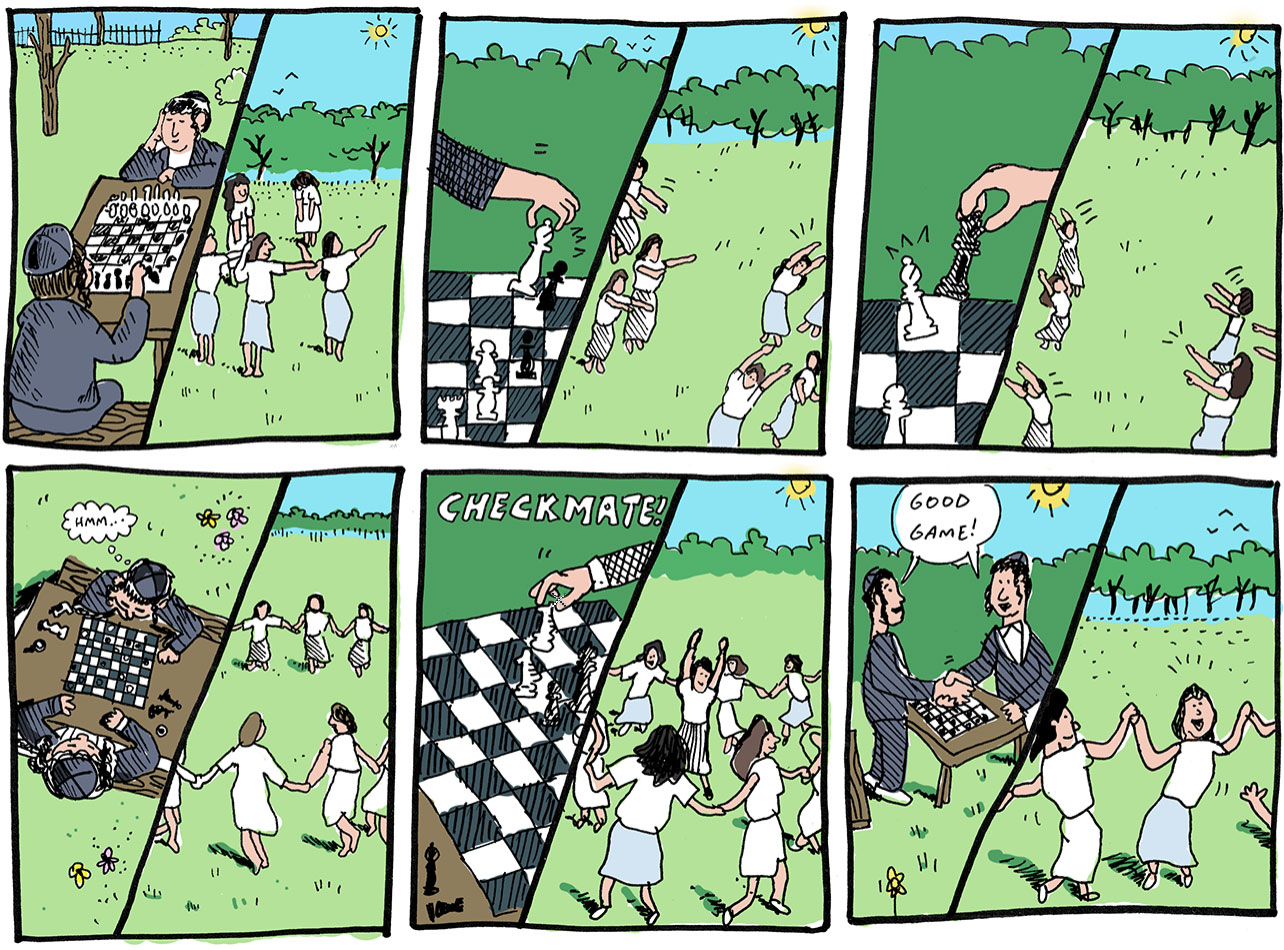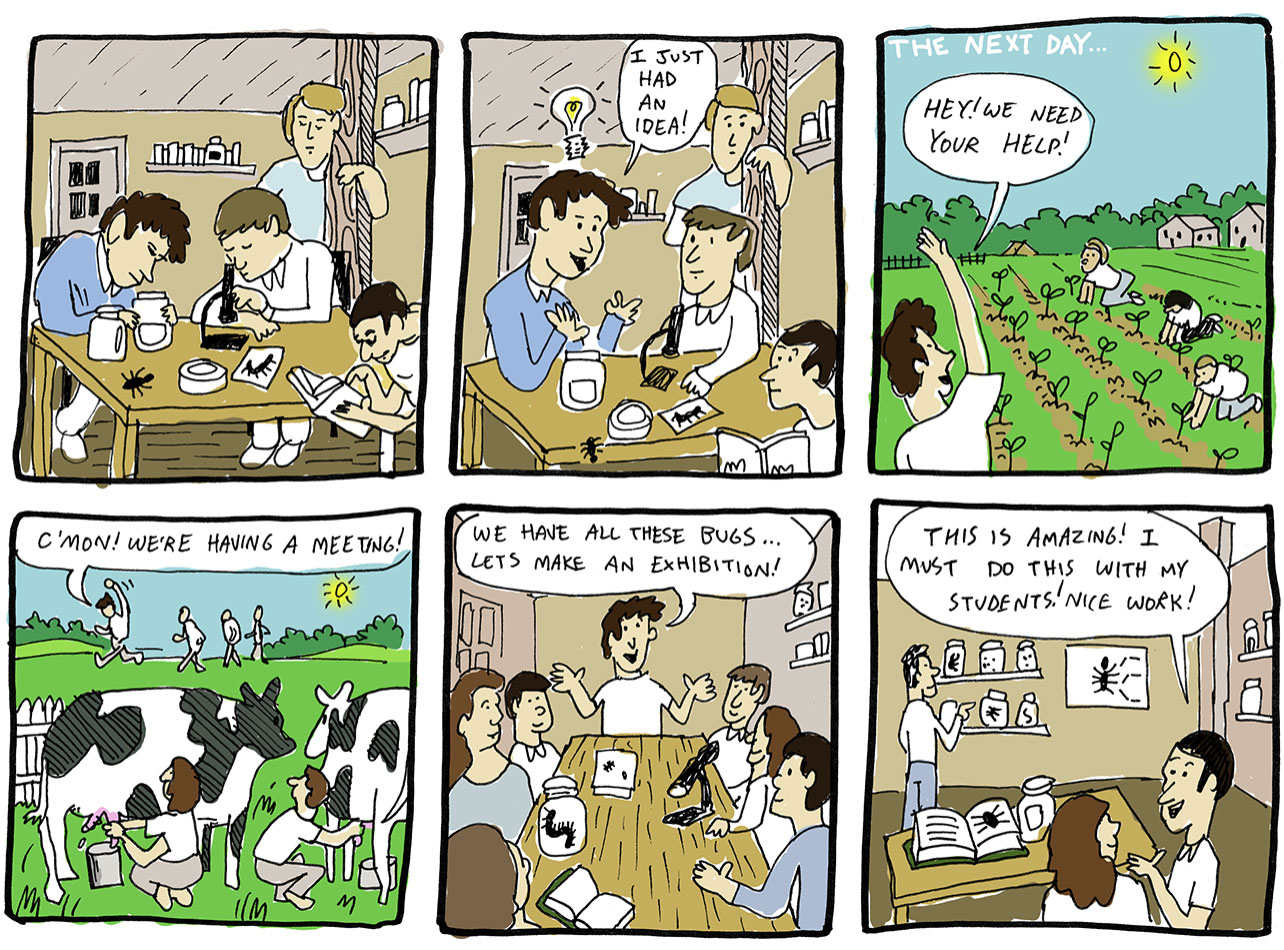Summers are for going on vacation. But they are also a time to improve your health, and—for many young people—to be political!
It was common for Jewish families to send their kids to summer camps. Here you’ll learn more about different summer camps. Find the one Beba Epstein will be attending. She’ll be playing a main role!
Spanish Civil War begins
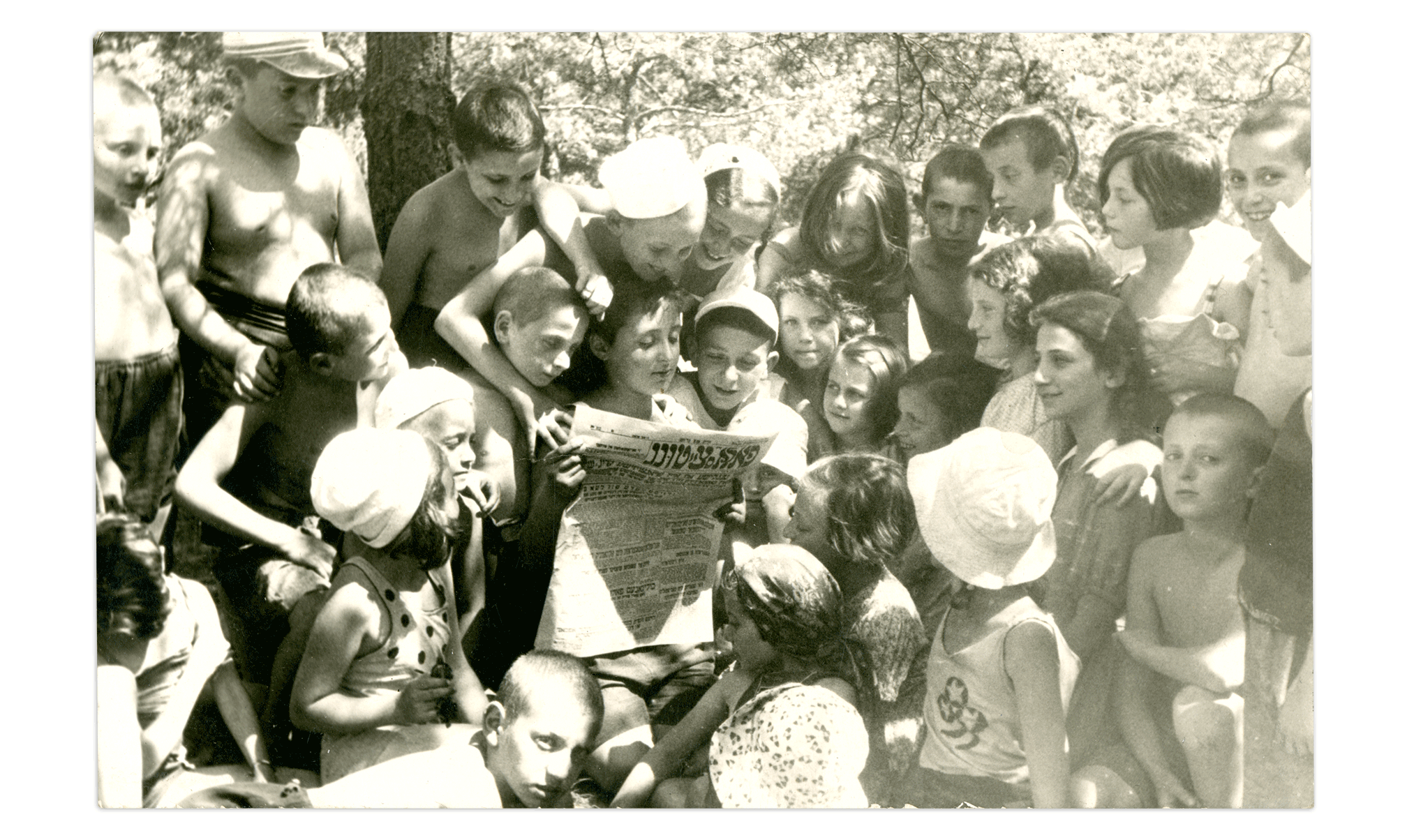
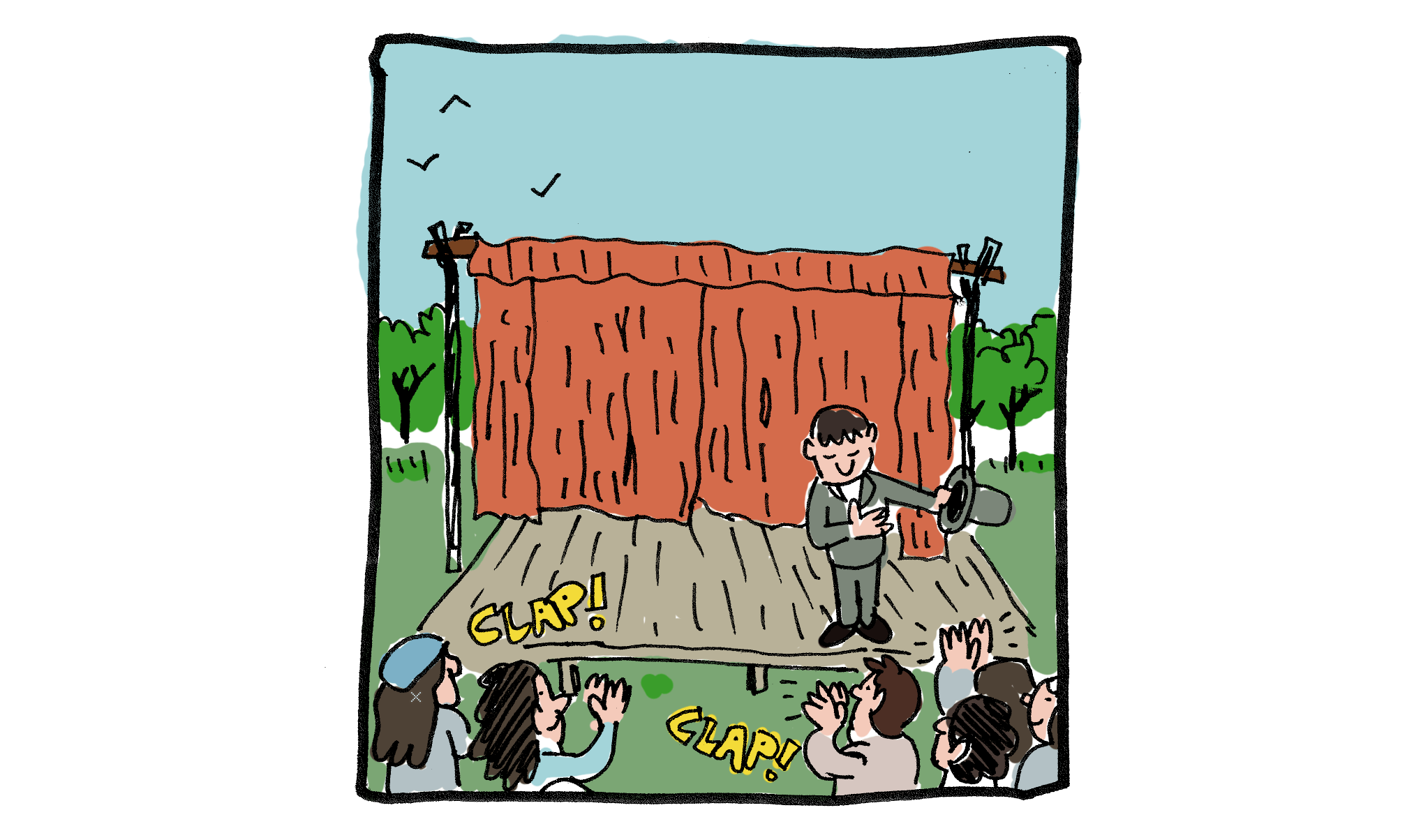
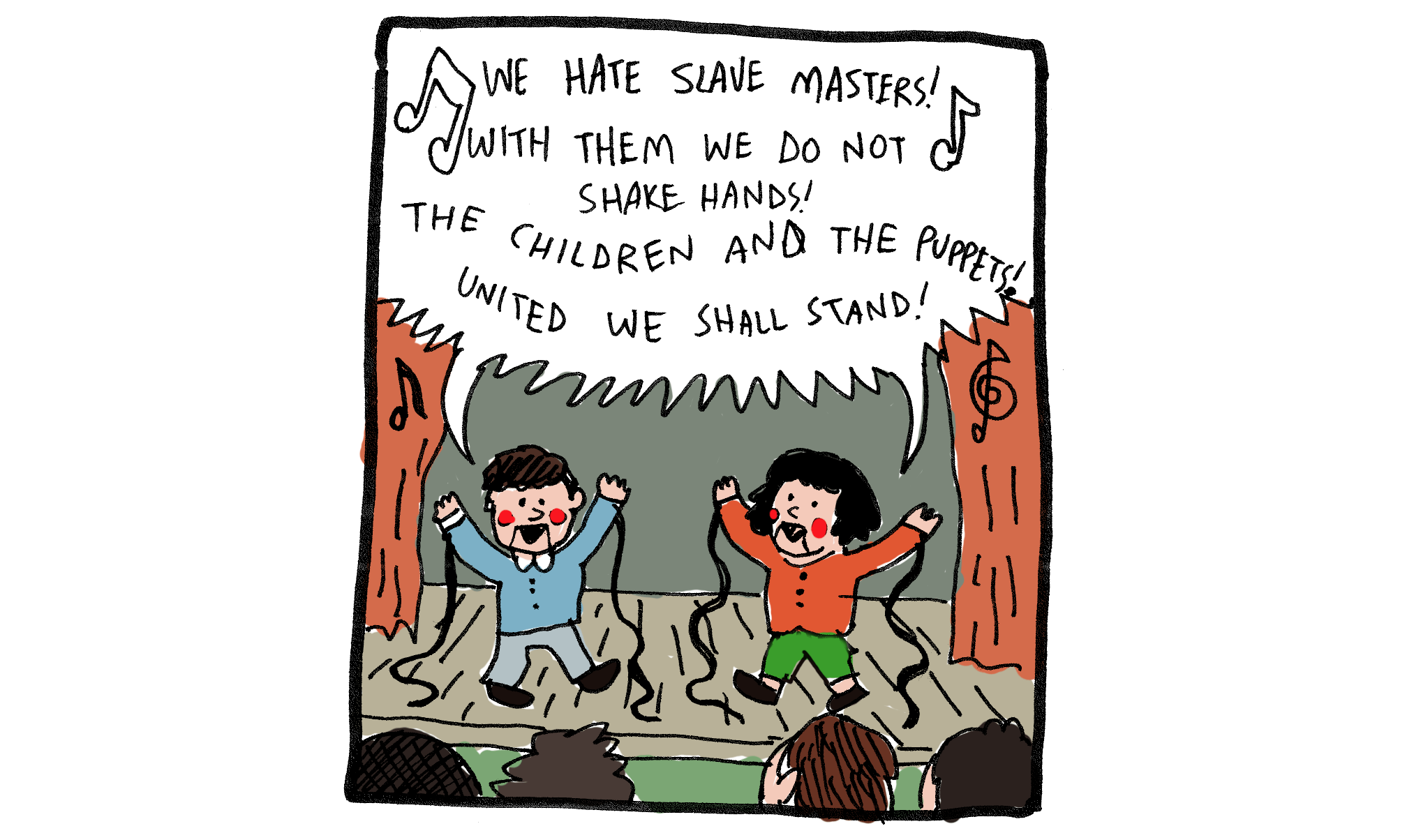
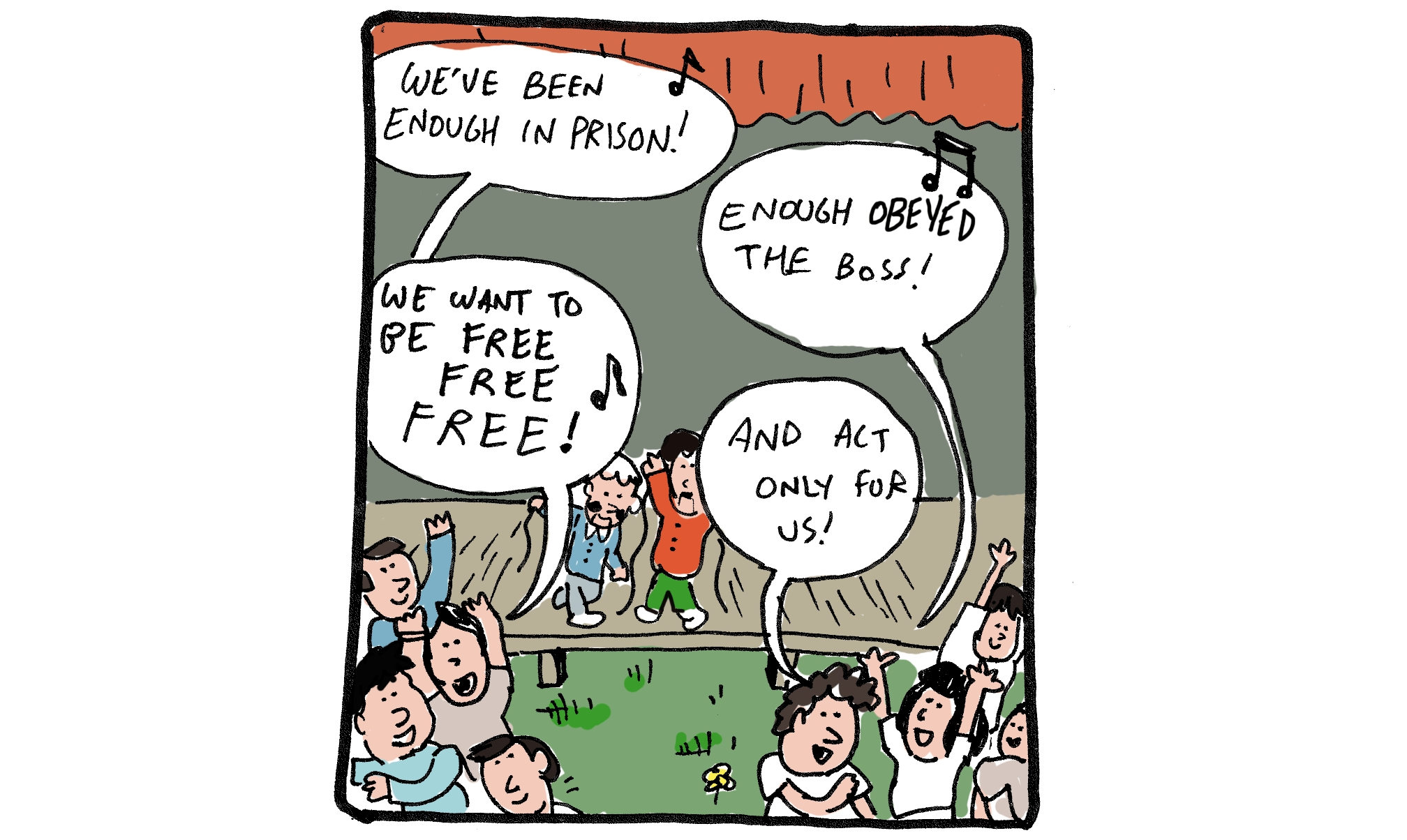
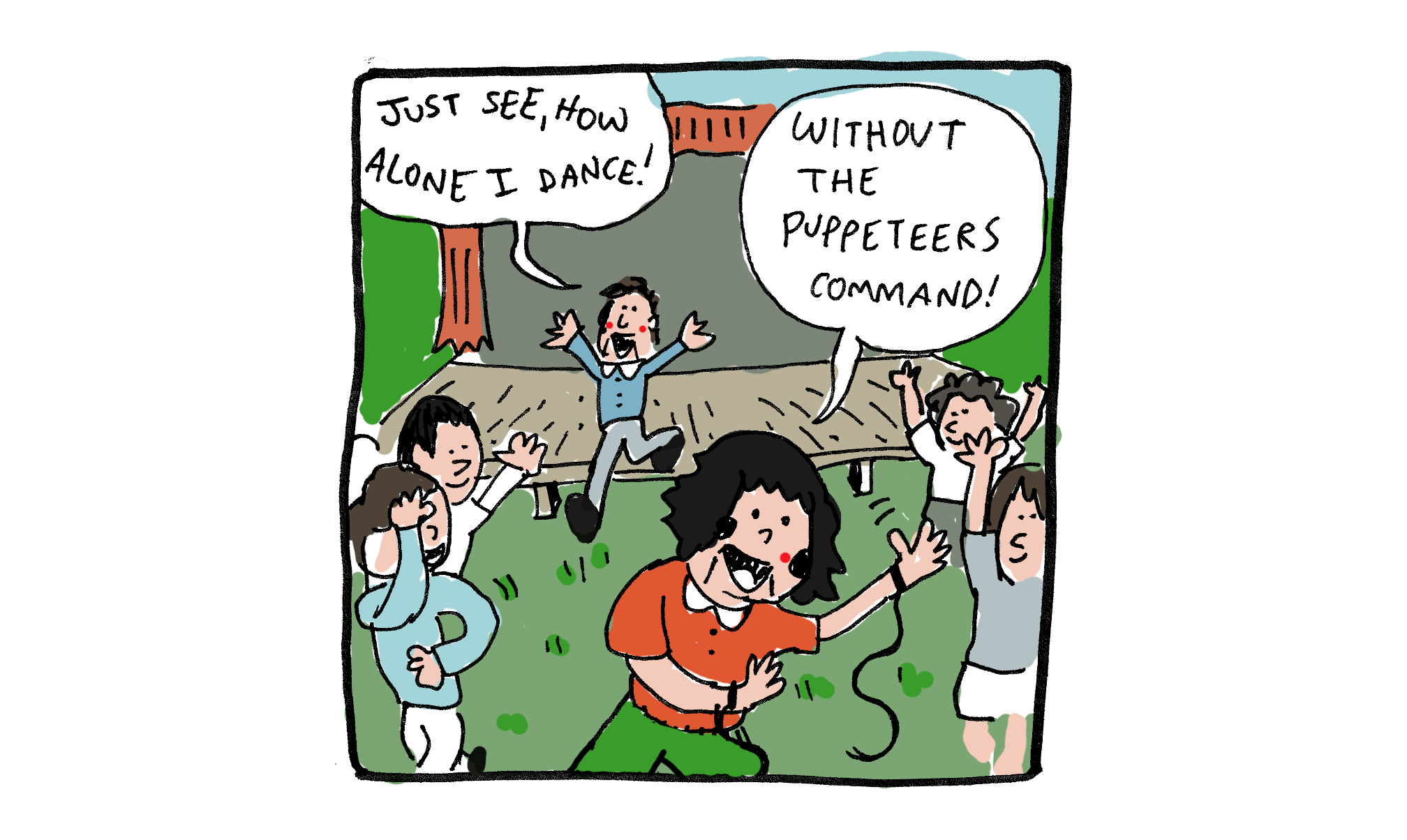
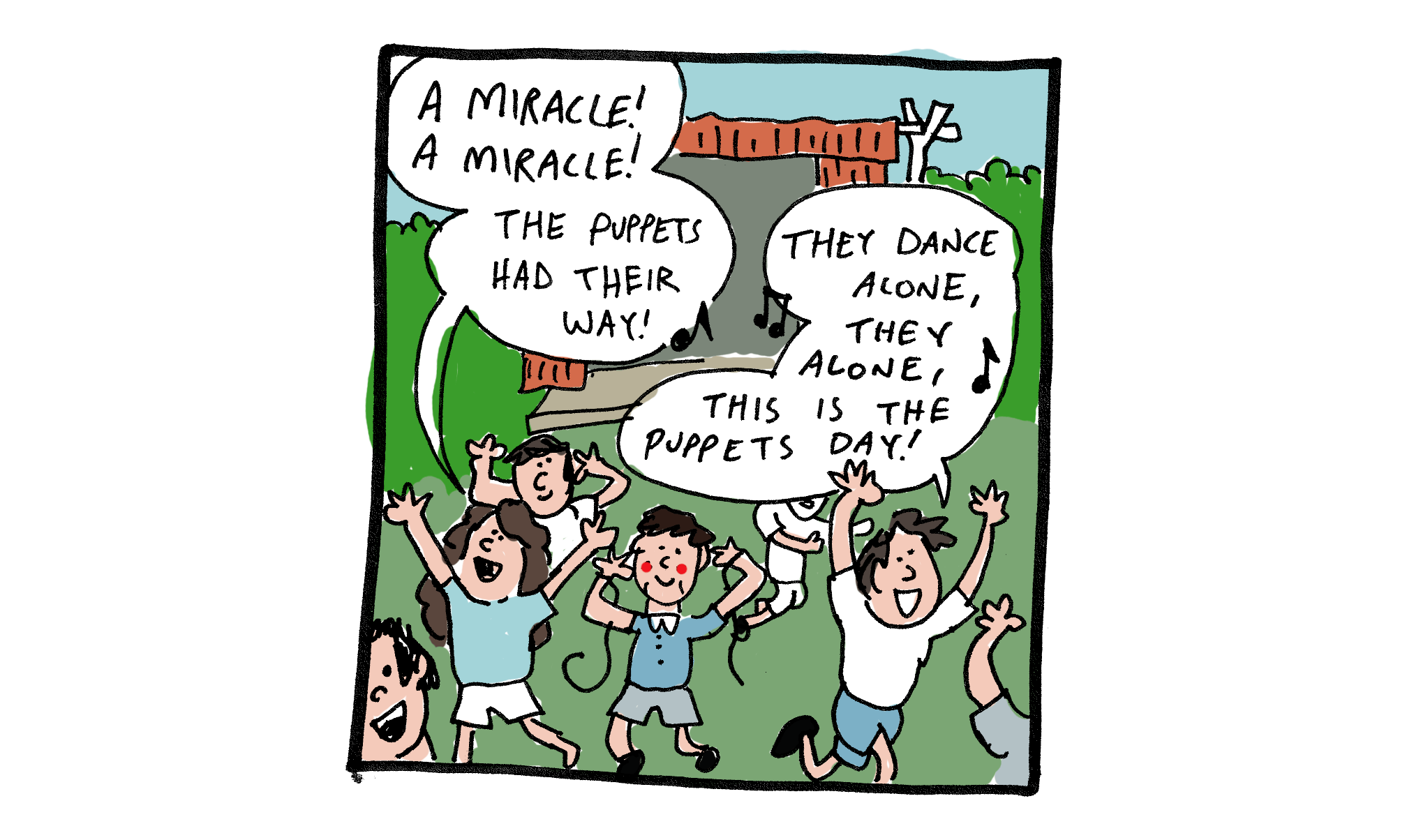
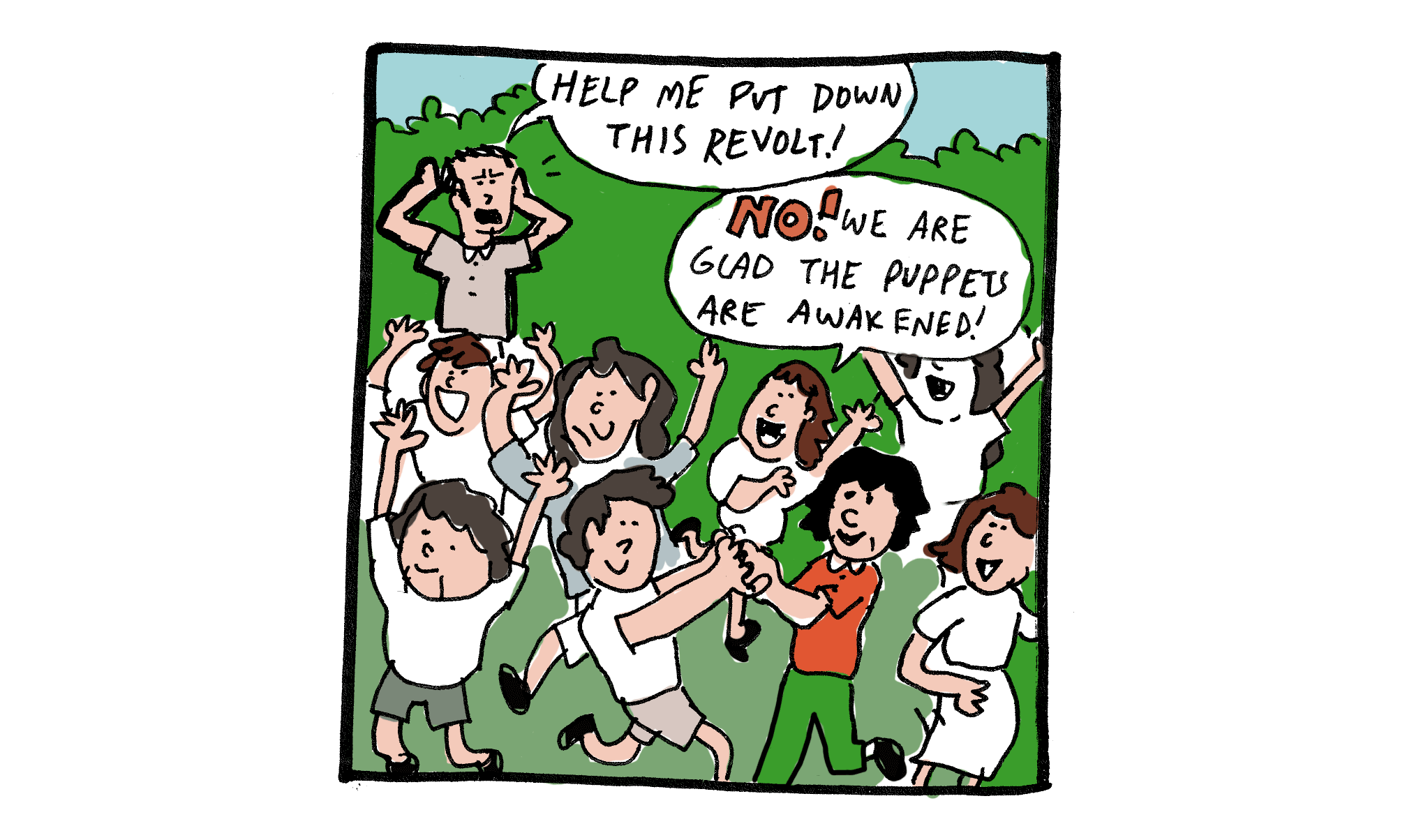
The Medem Sanatorium was a health spa located in Miedzeszyn (near Warsaw). It was created by the Bund and its TSYSHO school system in 1926. The Bund was a socialist political party that supported Yiddish culture and the belief that the future of the Jewish people would best unfold in the diaspora, spread far and wide in countries around the world. This was the opposite viewpoint of Zionism, which supported the Hebrew language and the return of Jews to a national homeland in Palestine. TSYSHO was the Yiddish school system in Poland supported by the Bund. It taught a non-religious and socialist orientation to its students.
The Medem Sanatorium offered medical attention and educational opportunities to children of poor health from urban working-class families. The Sanatorium had a summer camp and cared for children year-round. Most of the participants were Jewish. However non-Jewish children were welcome and did attend the camp. Many children who went to the summer health colony were from families who supported the Bund. The sanatorium not only gave the children an opportunity for fresh air, but also instilled the values of the Bund organization. It gave them a sense of responsibility and individual freedom. Activities at the sanatorium included schoolwork, farming, exercise classes, theater performances, and enjoying the fresh air in the countryside.
Beba was often sick, so she attended Medem’s health colony during the summer to improve her health. Shall we see what Beba is up to at Medem?
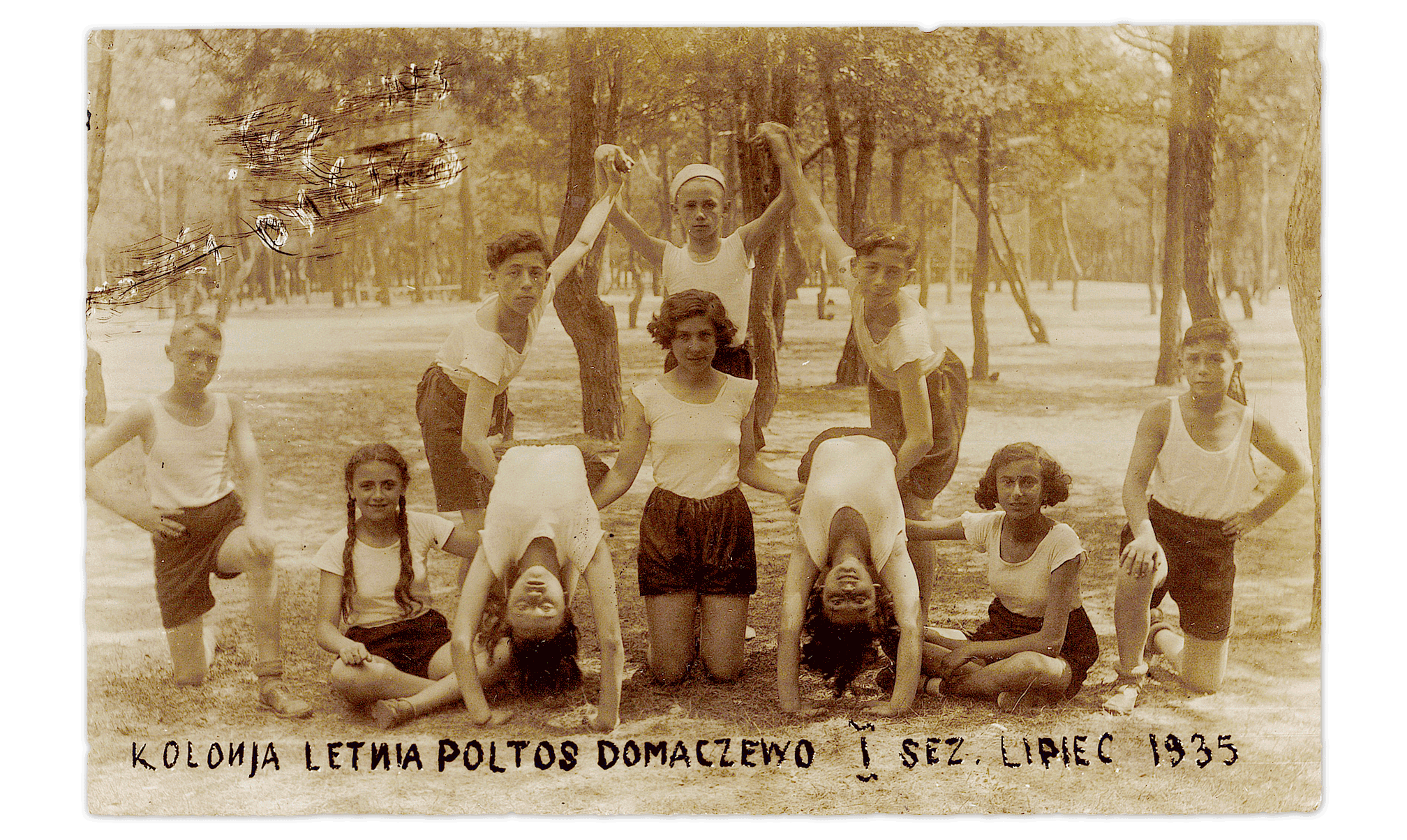
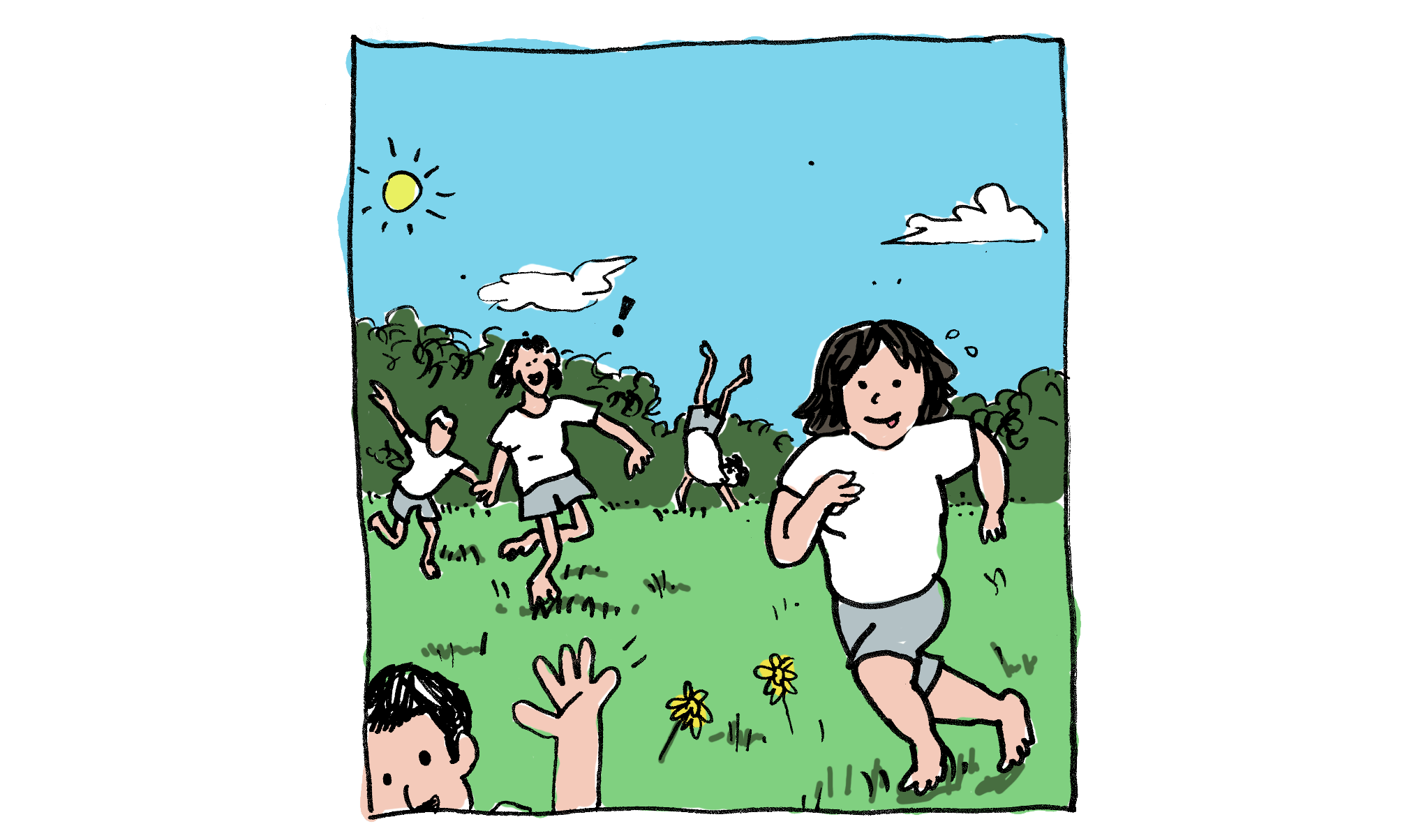
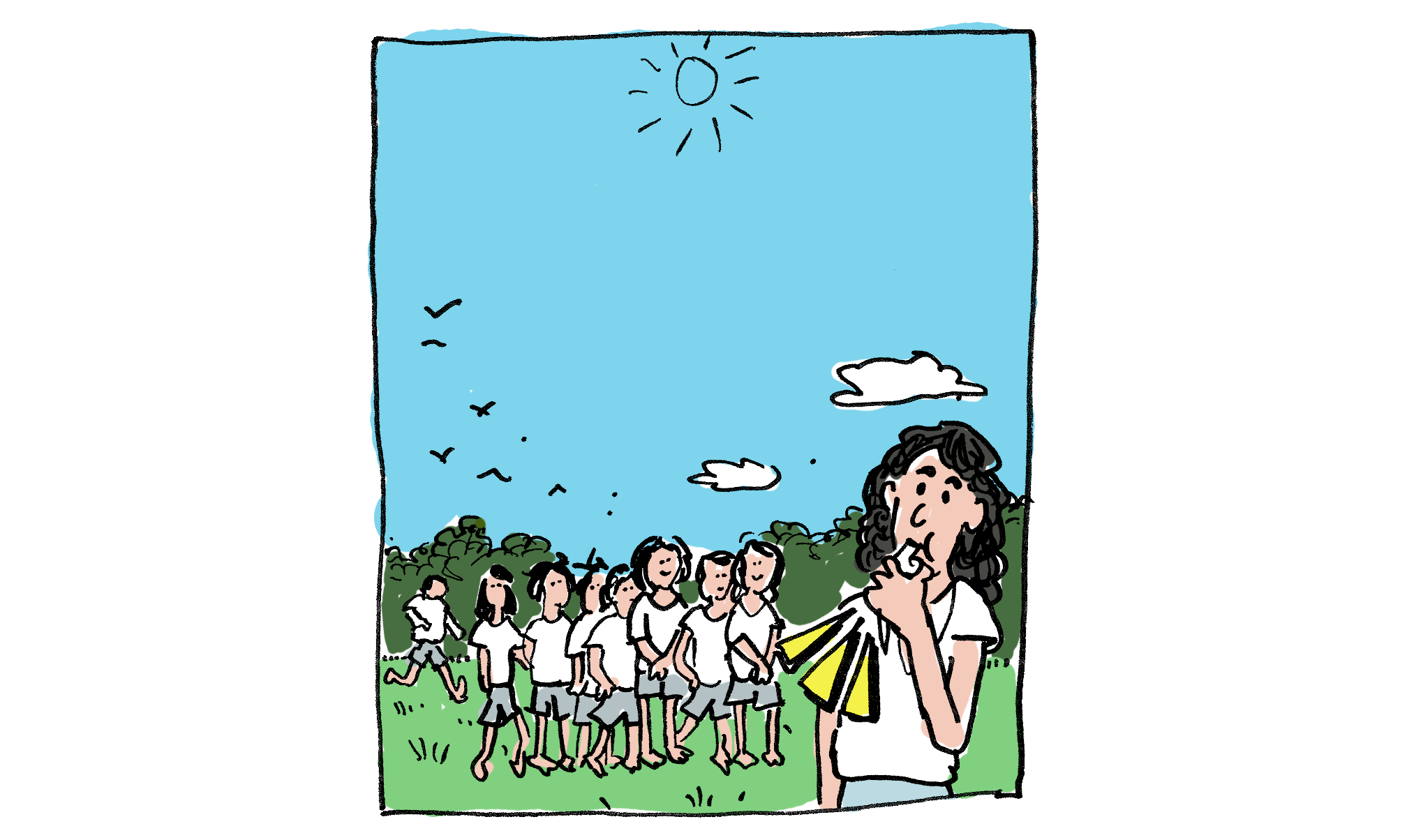
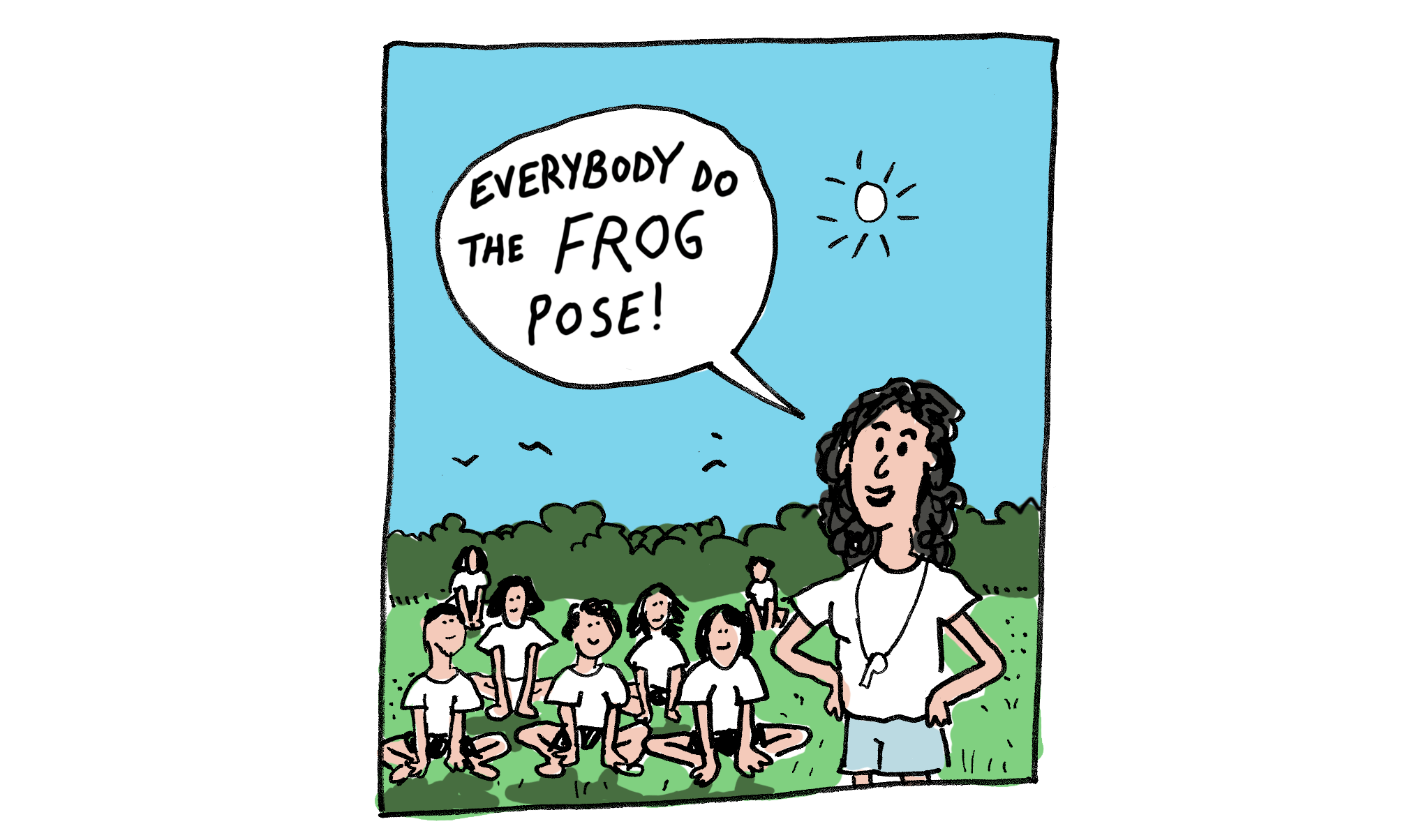
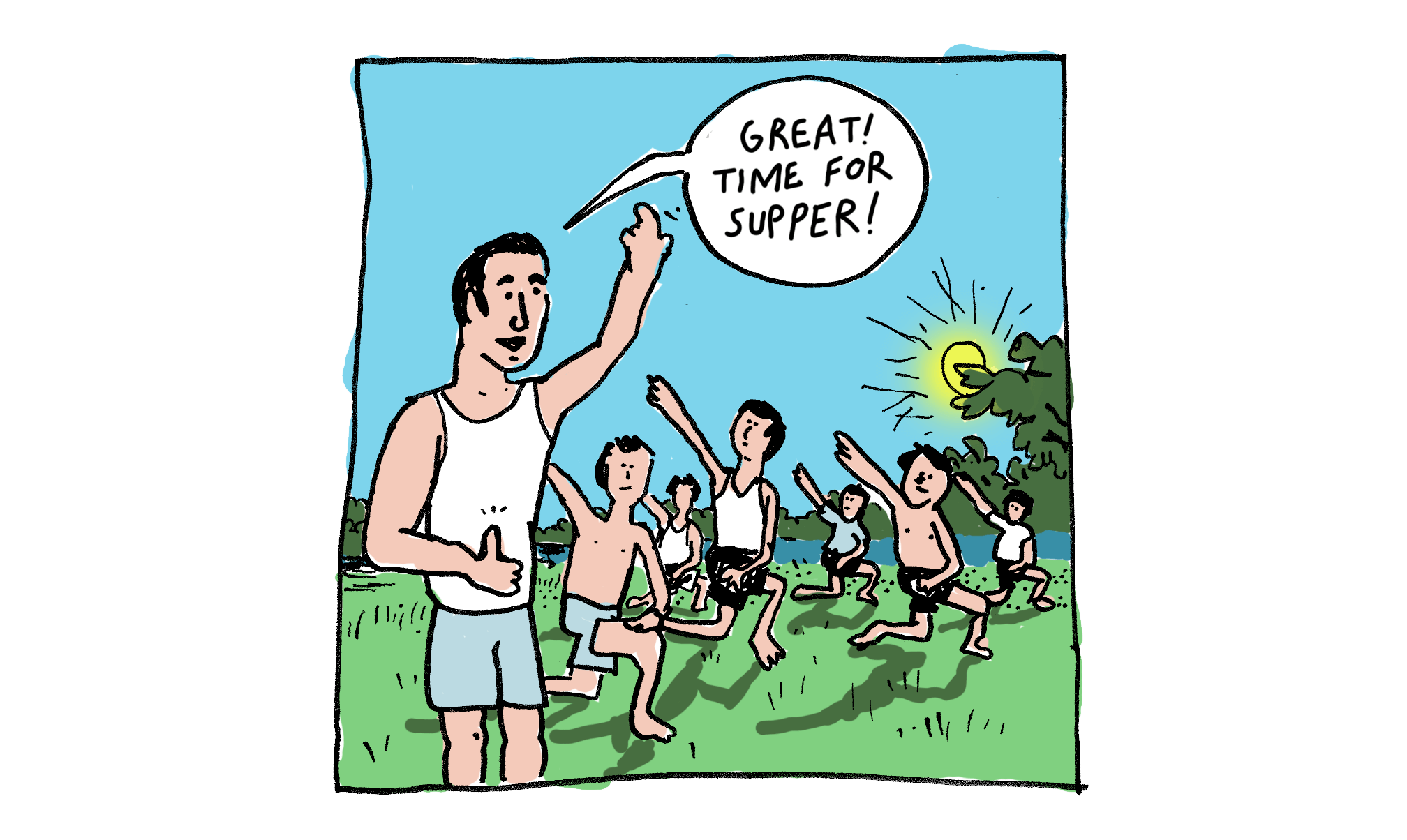
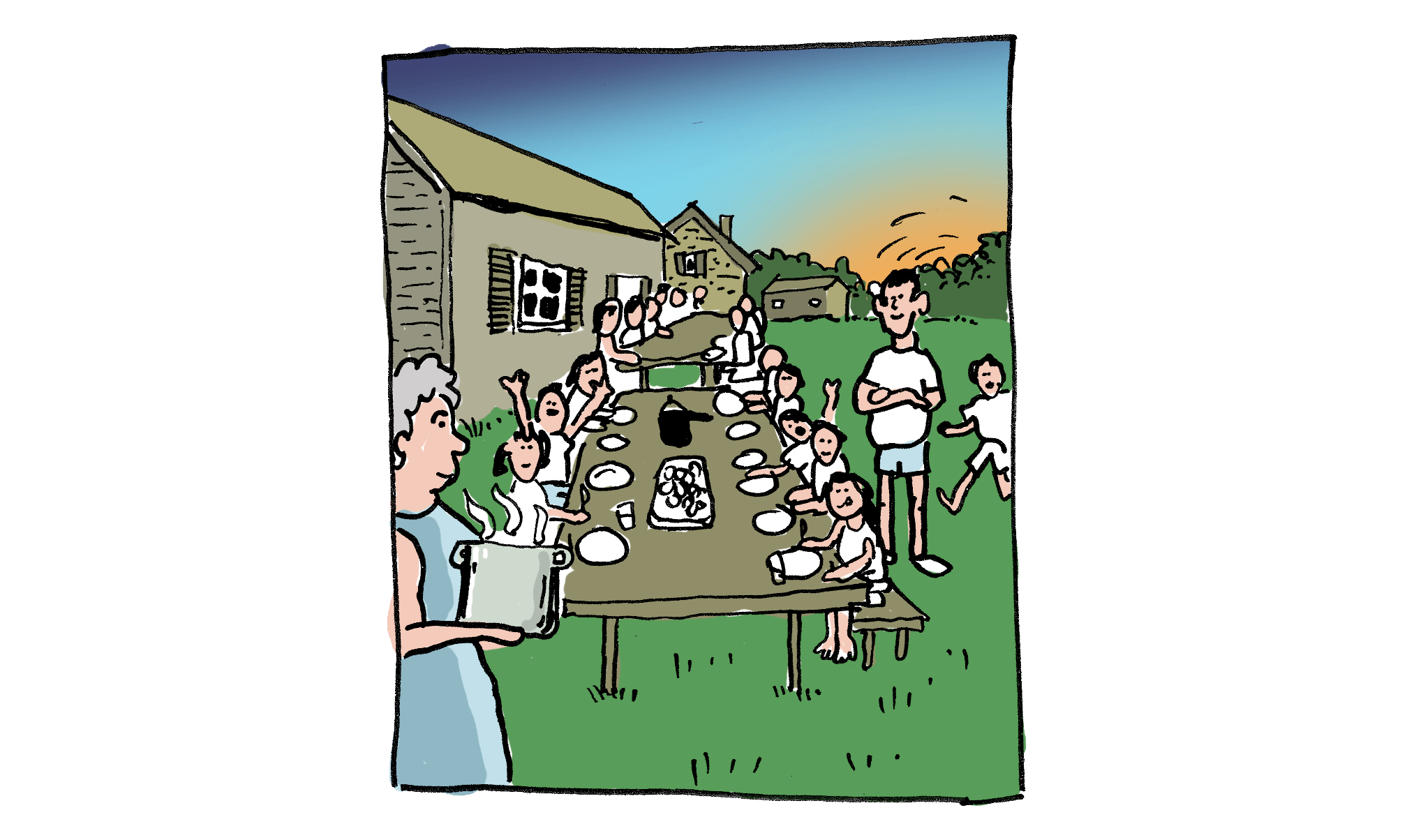
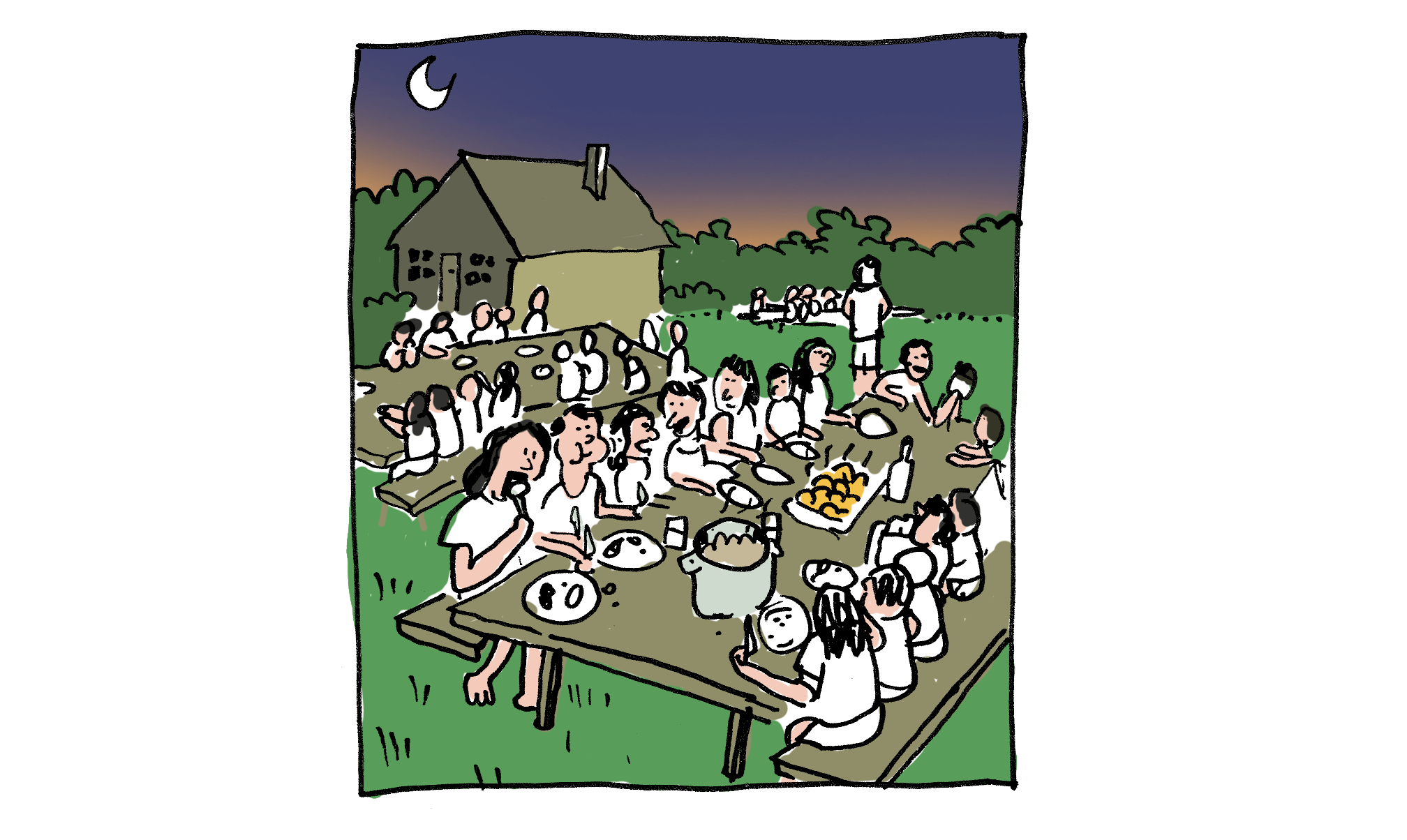
CENTOS, the National Society for the Care of Orphans, was an organization that provided care for Jewish children and orphans from 1924-1940. The large-scale death and destruction that World War I wrought upon Eastern Europe created a large number of Jewish orphans. CENTOS provided services such as education, homes and health care to children of the Jewish community. In the late 1920s and 1930s CENTOS also founded day camps and summer camps for children in need. These children came from poor, urban areas of Poland such as Domachevo (now Damacava, Belarus). Children at these camps spent much of their time doing outdoor activities such as gymnastics, swimming, and playing games.
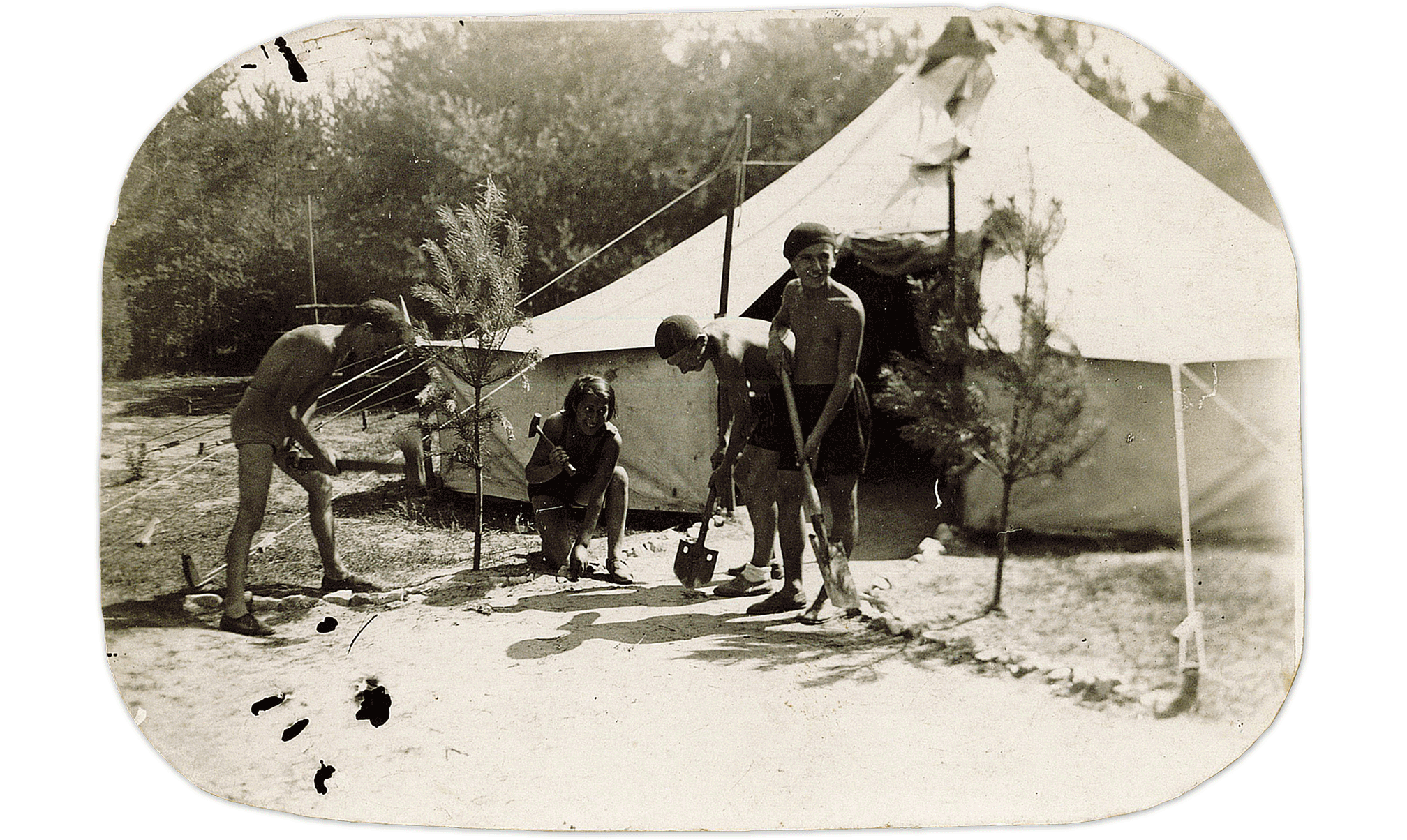
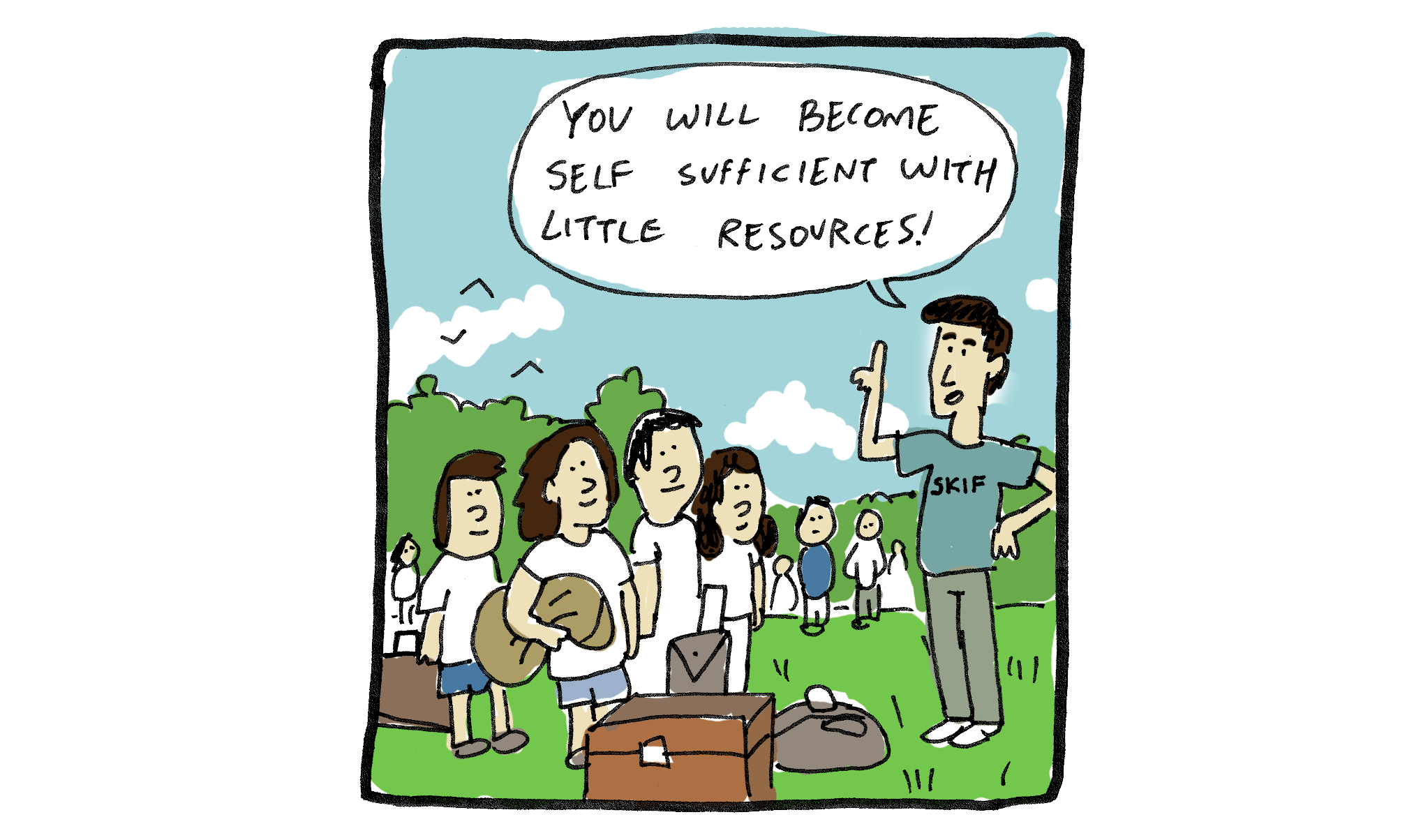
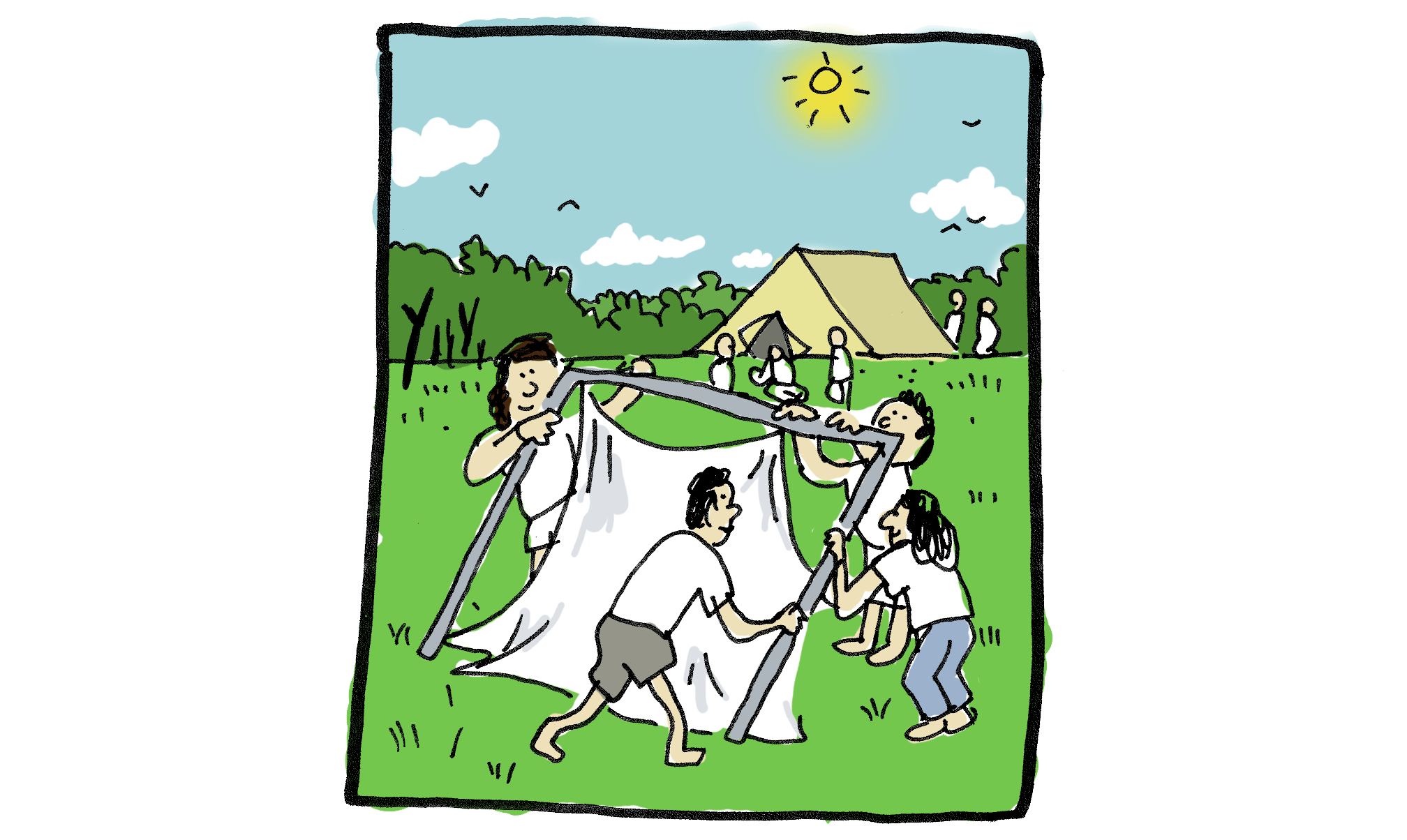
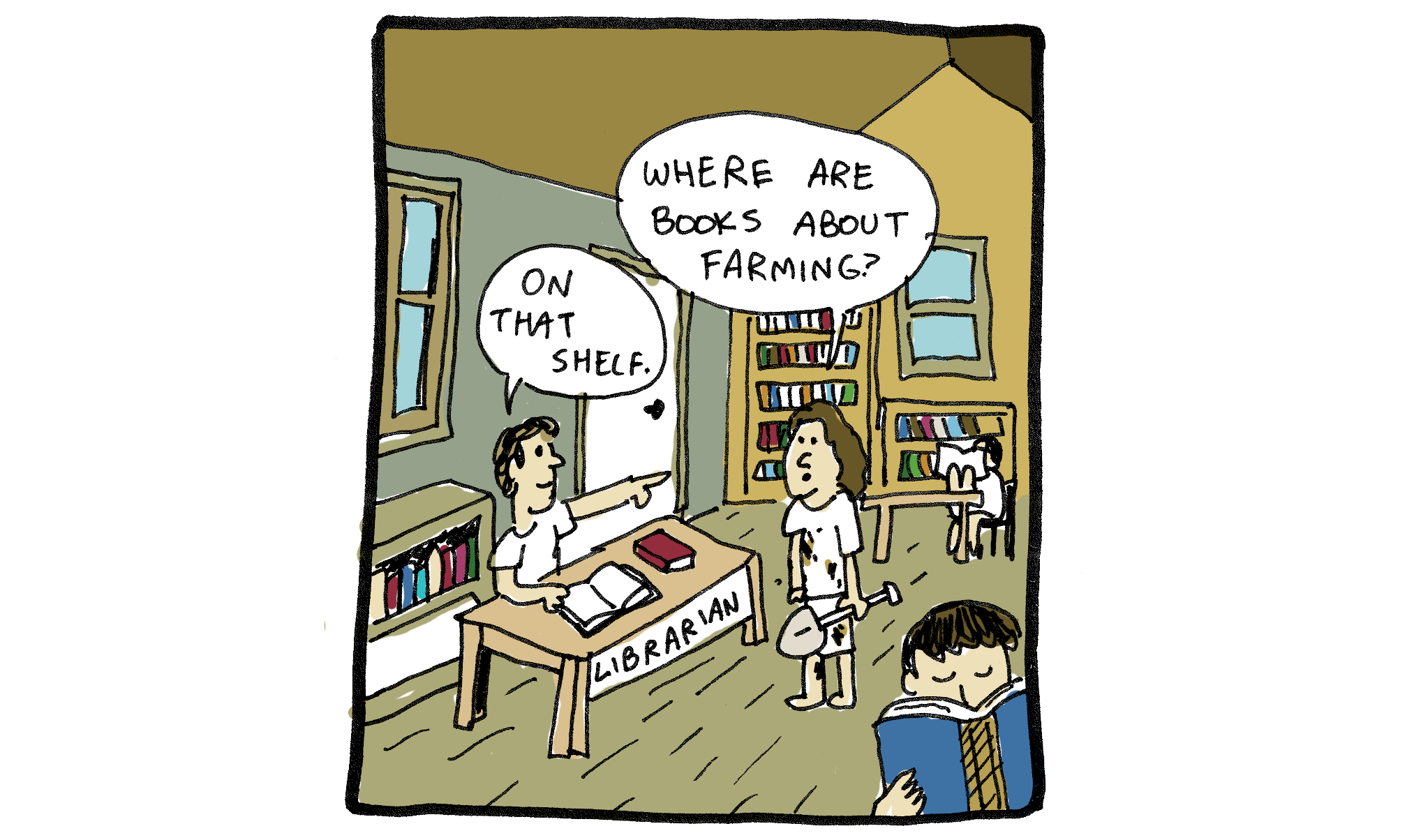
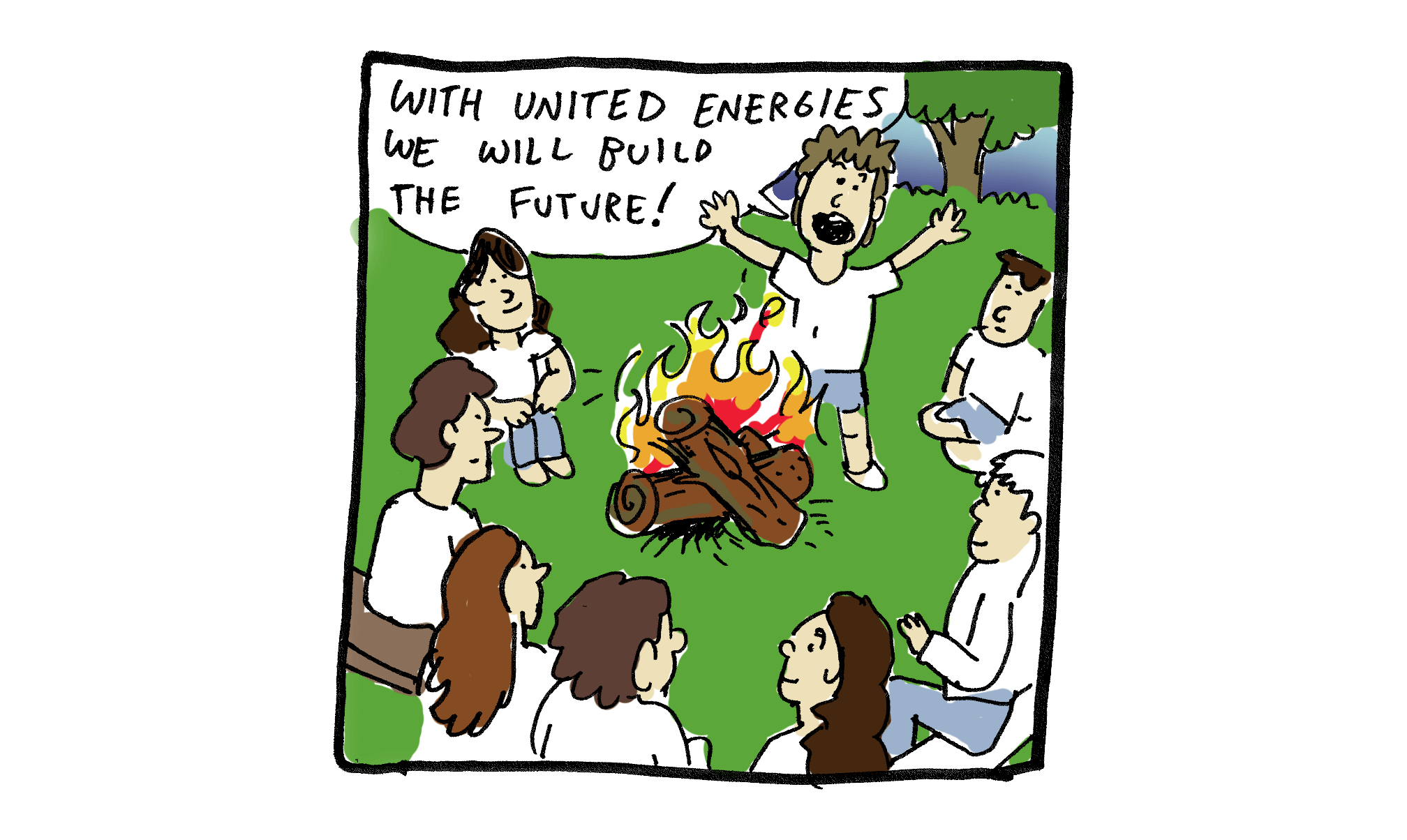
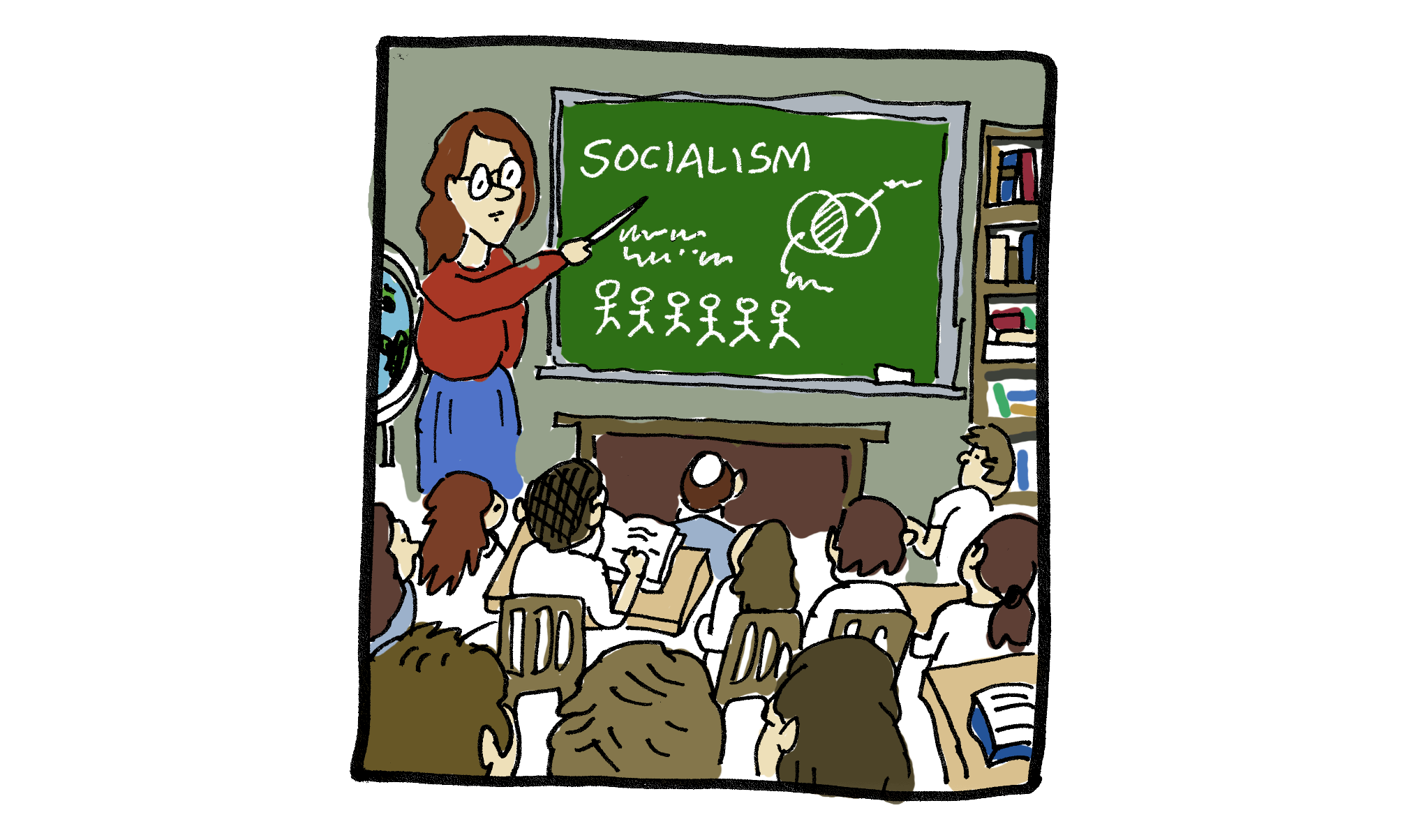
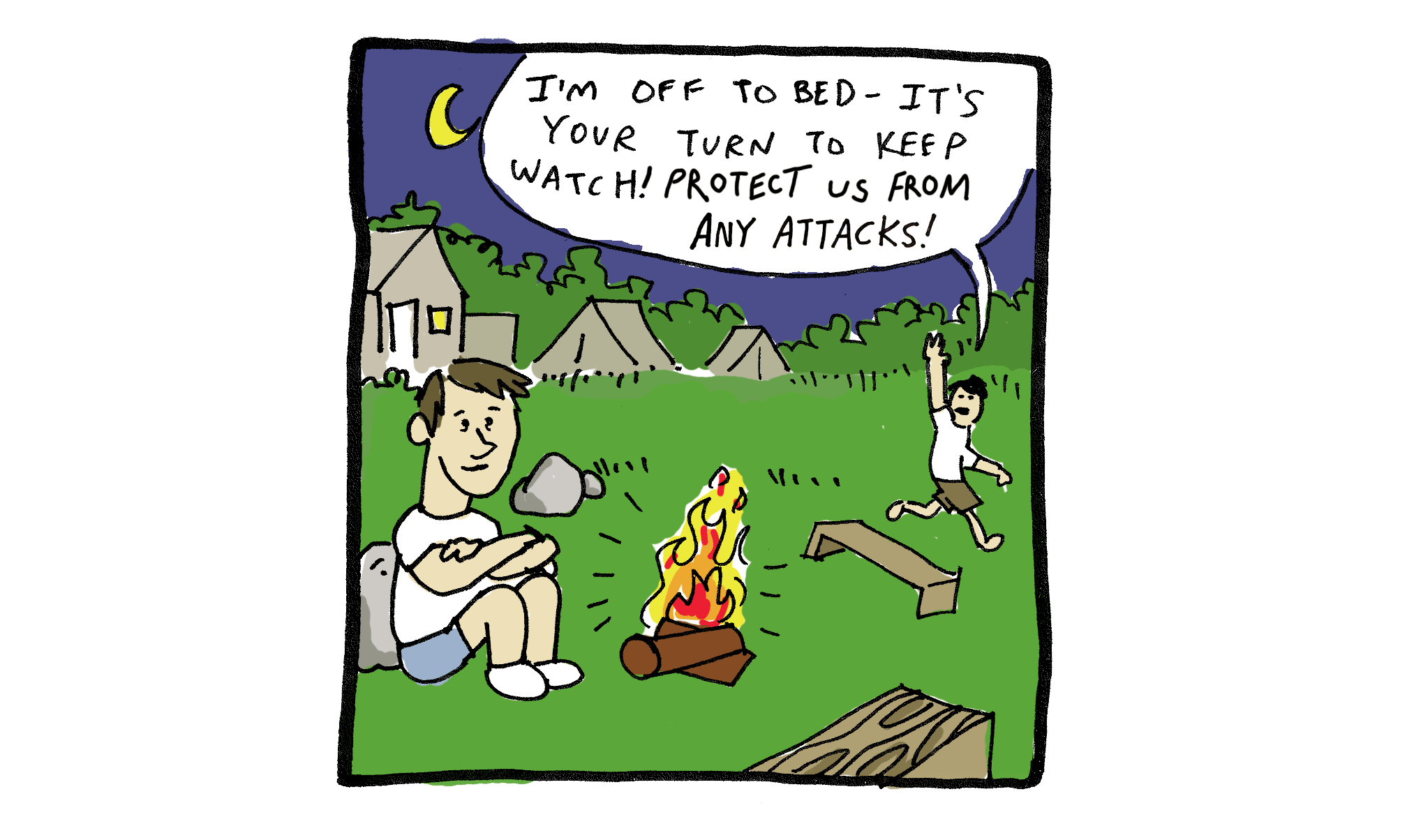
The Bund was a Jewish socialist political party. They devoted efforts to develop opportunities for their younger members. For instance, they established the Sotsyalistisher Kinder Farband (SKIF), or Union of Socialist Children and Tsukunft (the Future) youth organizations. By the end of the 1930s, Bund youth organizations had 200 branches across Poland. Their membership reached 12,000 people. When it came to developing their political views, Jewish kids often made choices independent of their parents and siblings. Not all Jewish children engaged in politics, but those who did had a wide variety of political parties and youth groups to choose from.
Children participated in SKIF until around the age 15. Then they would go on to join Tsukunft, which was for older members. Activities for SKIF (Skifistn) members included summer camps and sports activities. The campers at SKIF were taught the values of self-sufficiency as well as working together as a community. The activities children performed were very similar to those of scouts. For example, campers built their own tents and the dining hall kitchen. They were also assigned tasks throughout their stay. One such task was guarding the camp at night from potential antisemitic attacks. Beyond work committees, activities ranged from political talks and discussions and Bund history lessons to sing-a-longs and scouting activities such as hiking.
Founded in 1913, Tsukunft (the Future) was the main Bundist youth group. It organized different activities for its members, including summer camps, choirs, theater groups, and a biweekly publication called Yugnt veker. A direct translation of that title is "Awakener of Youth". Tsukunft was for teenagers 15 and older. Its activities and goals were similar to SKIF. The importance of self-sufficiency and community were implanted in campers as they worked together to build their tents and run camp activities such as preparing meals and protecting the camp.
The goal of both SKIF and Tsukunft was to create a Socialist spirit in their members, helping to foster a growing generation of Bundists.
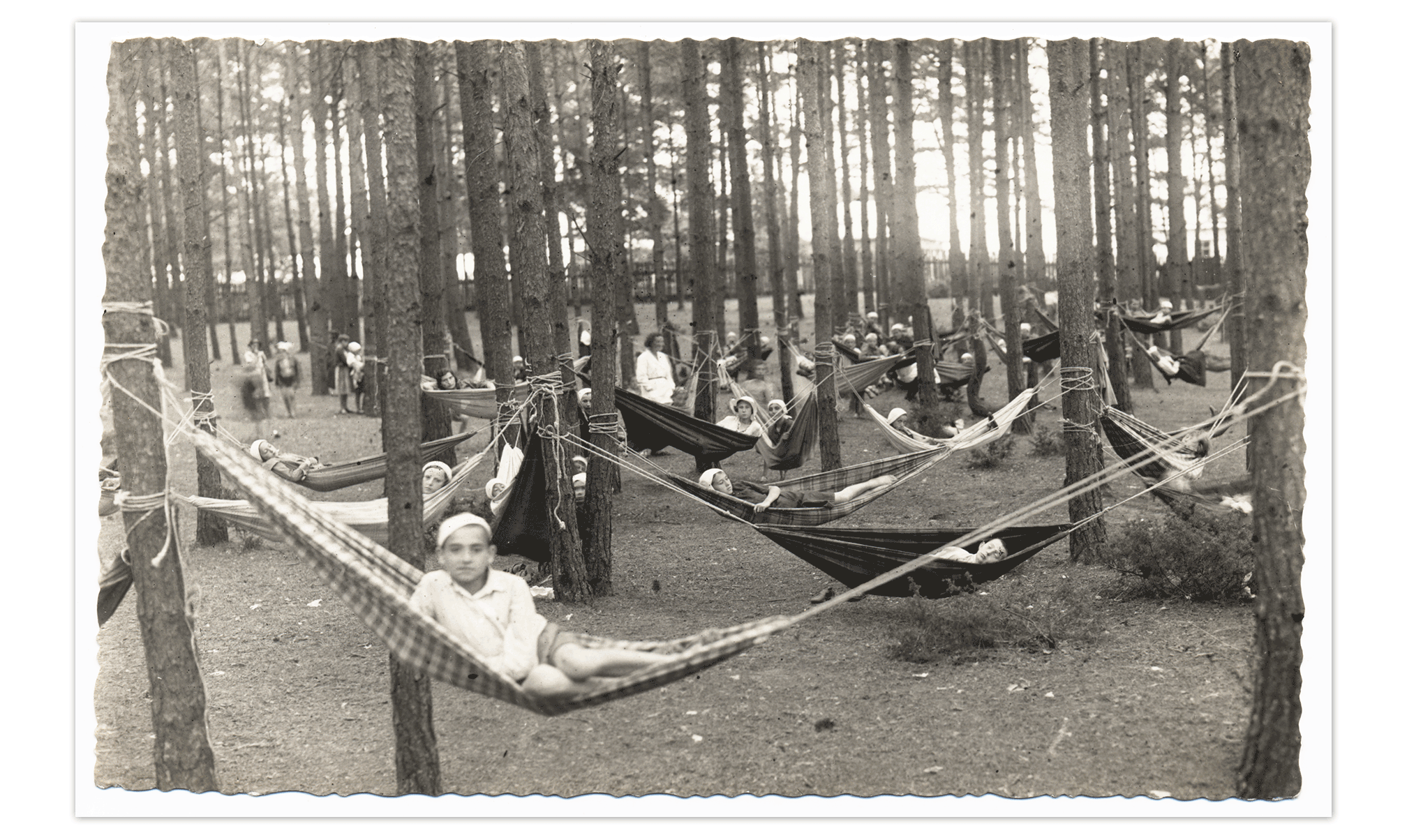
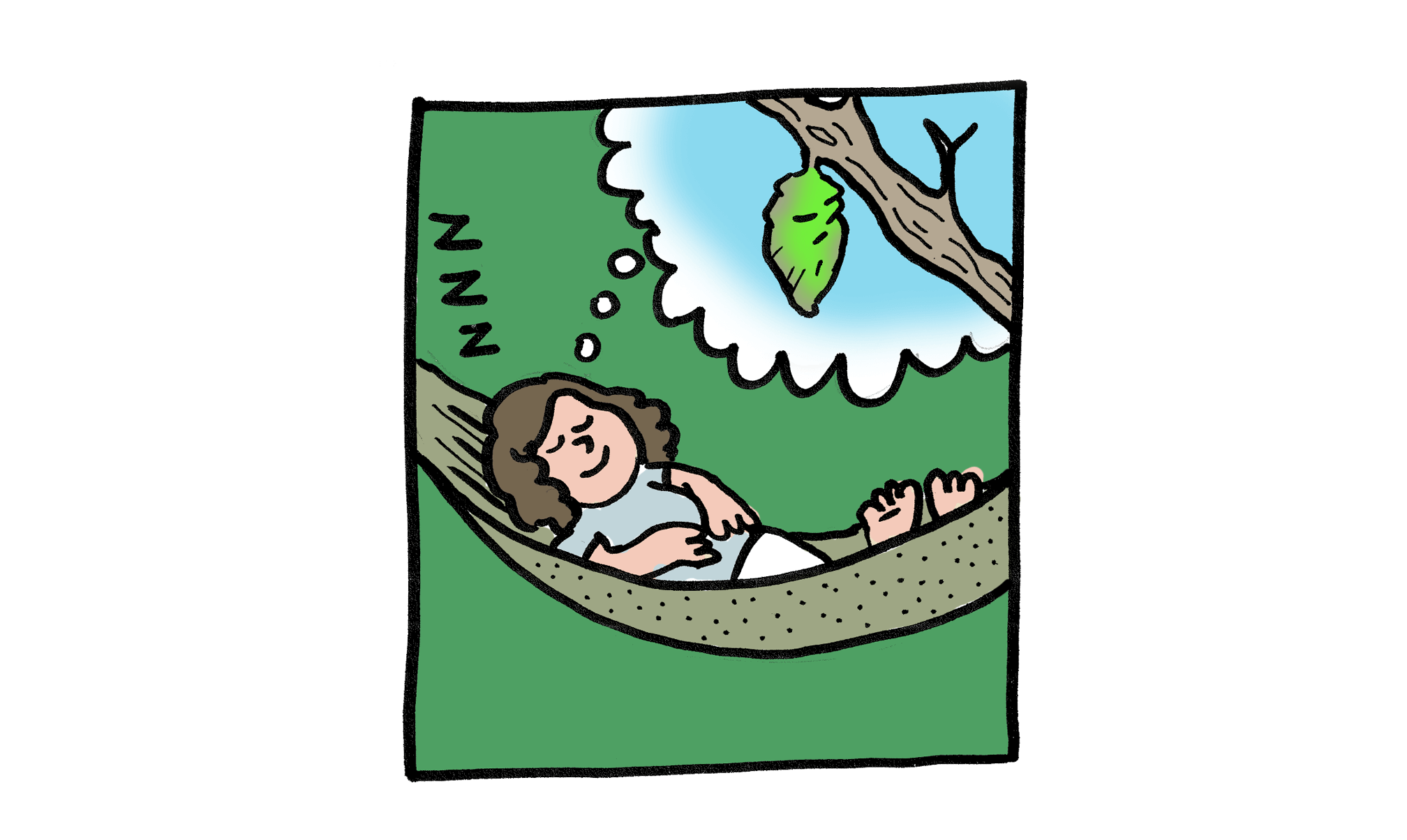
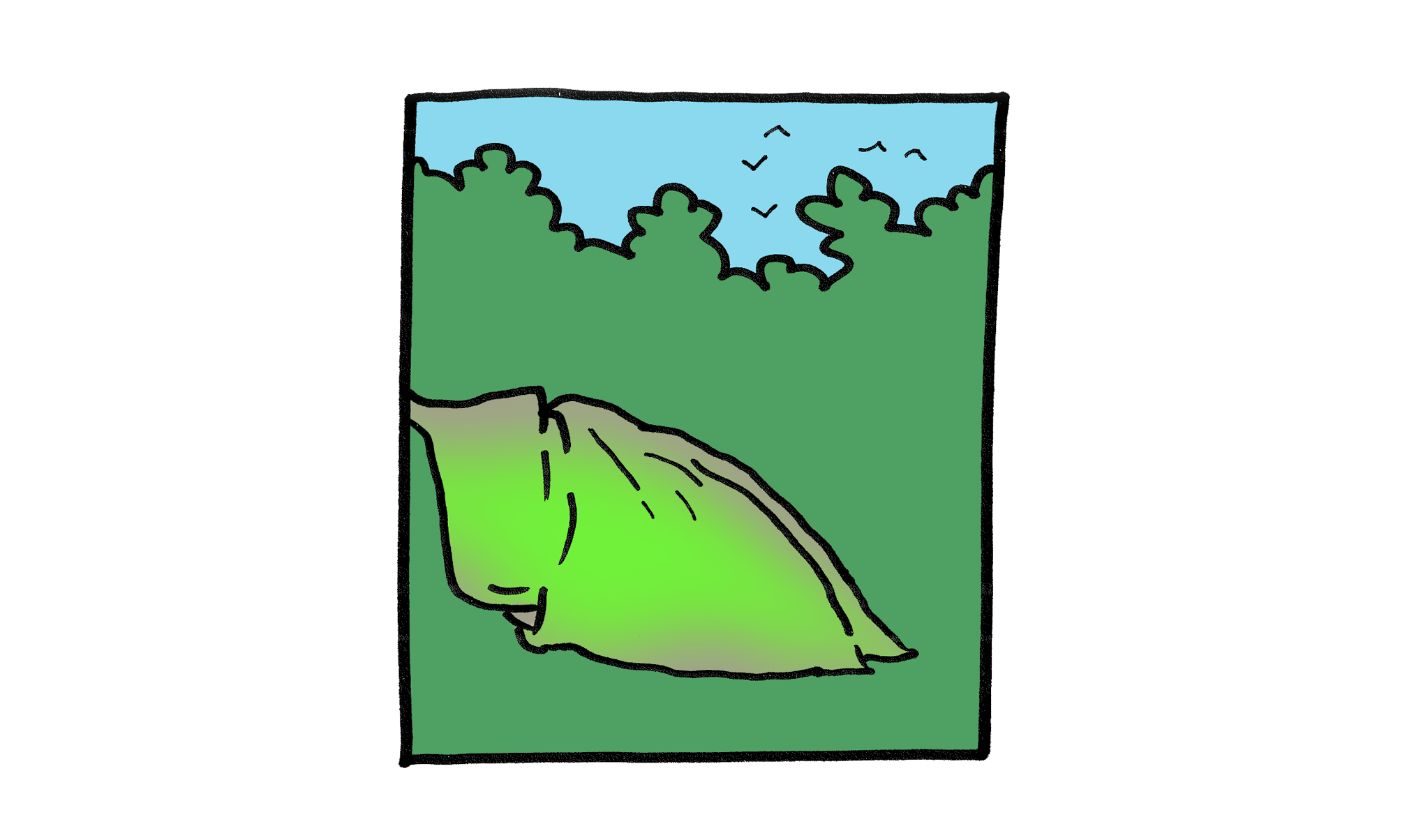
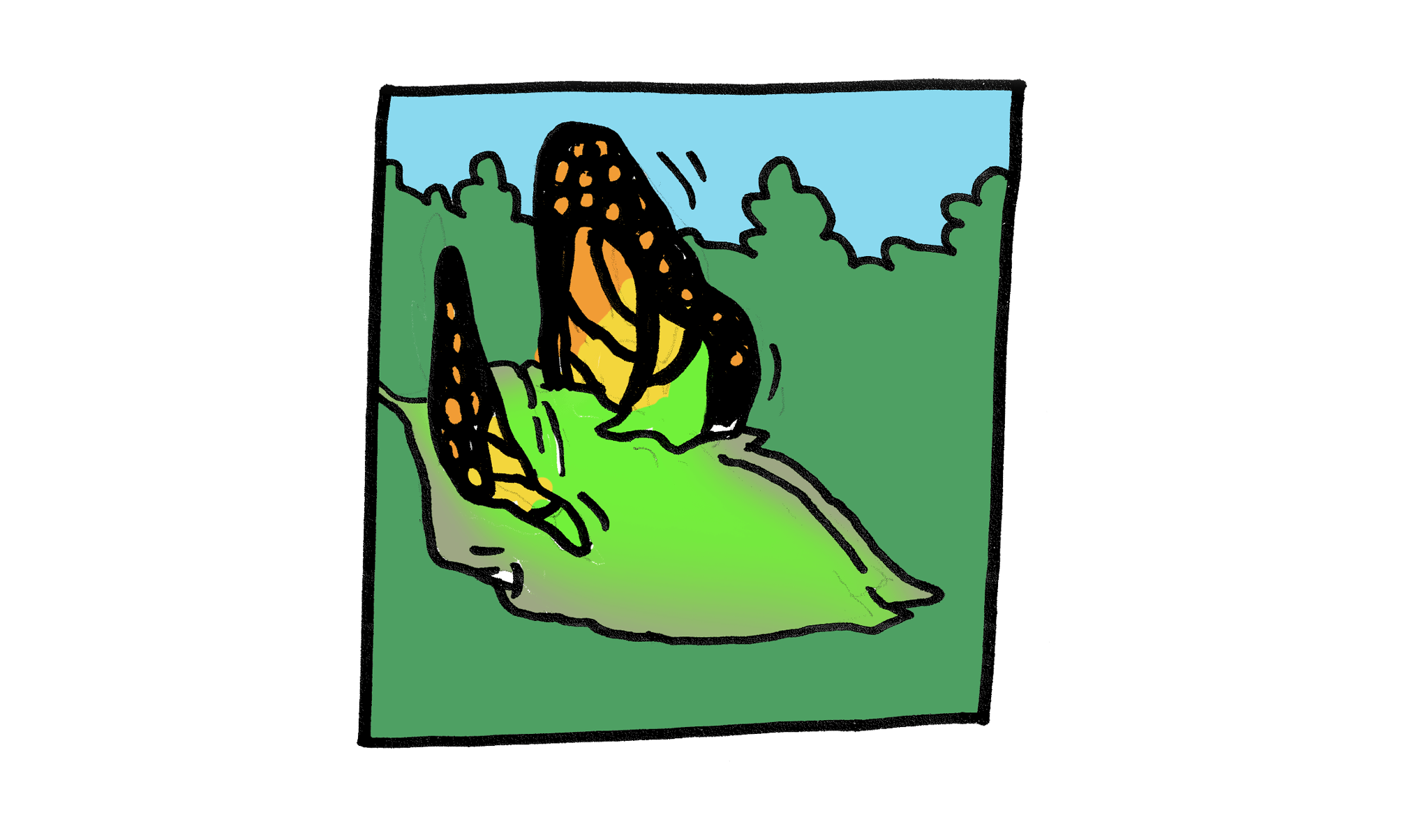
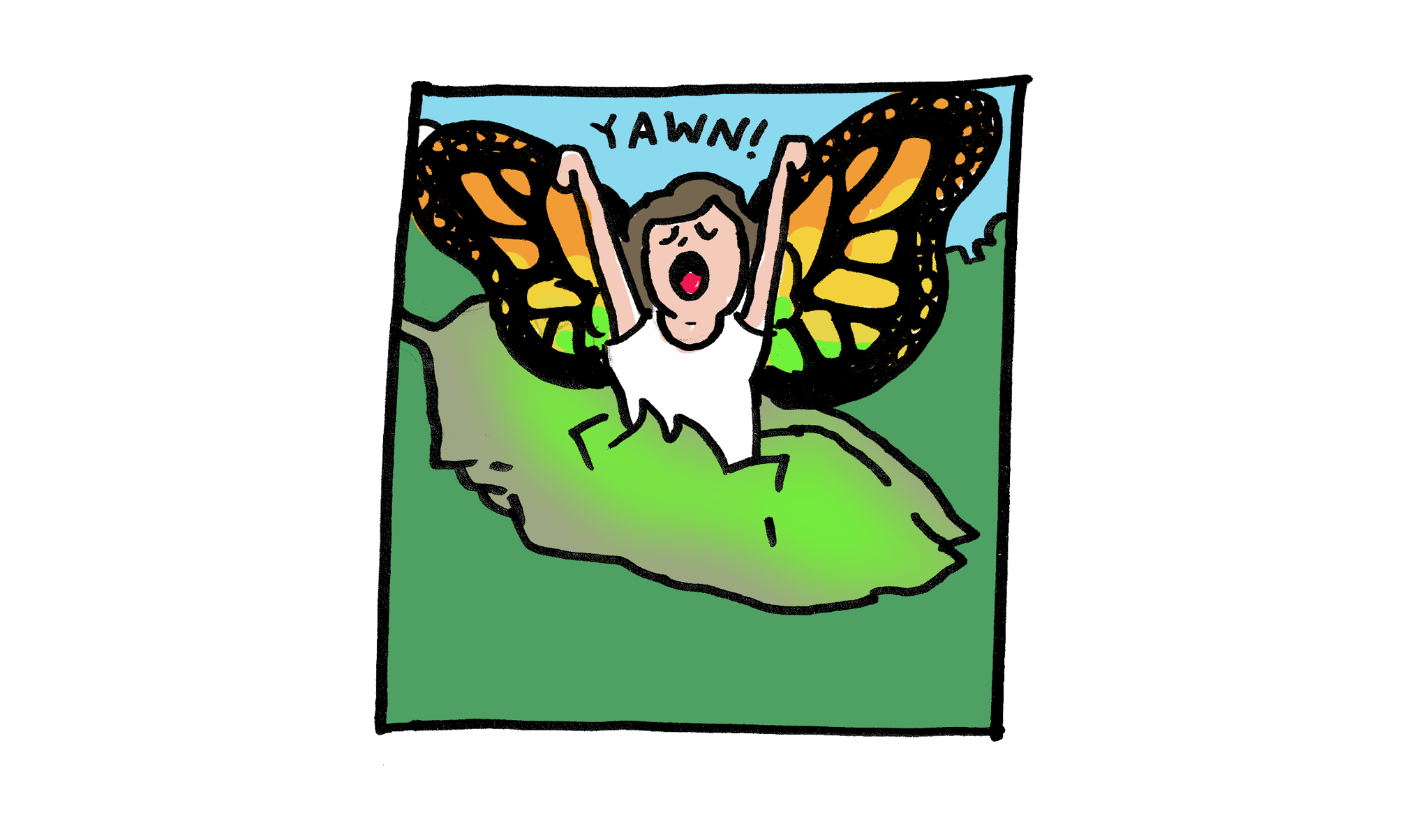
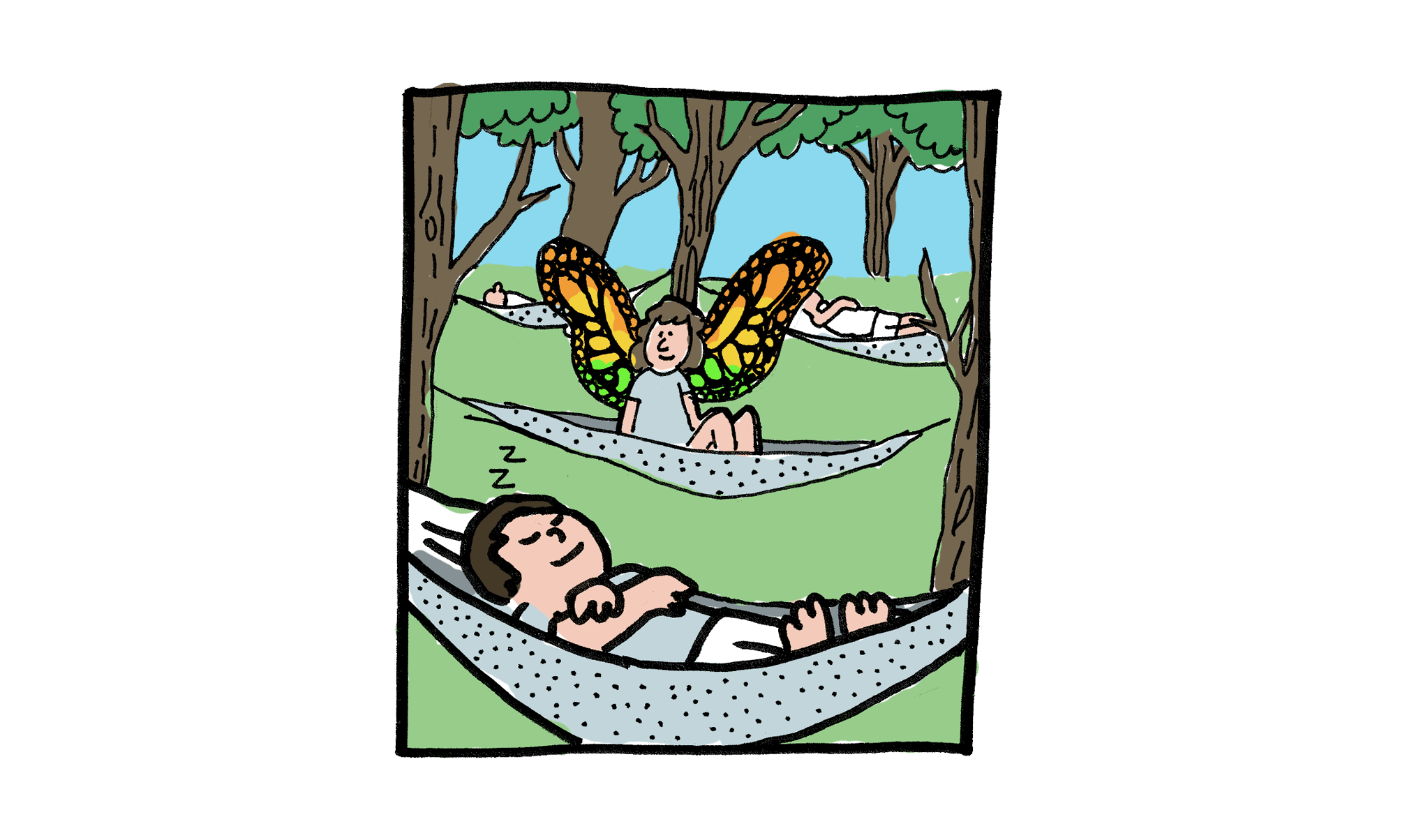
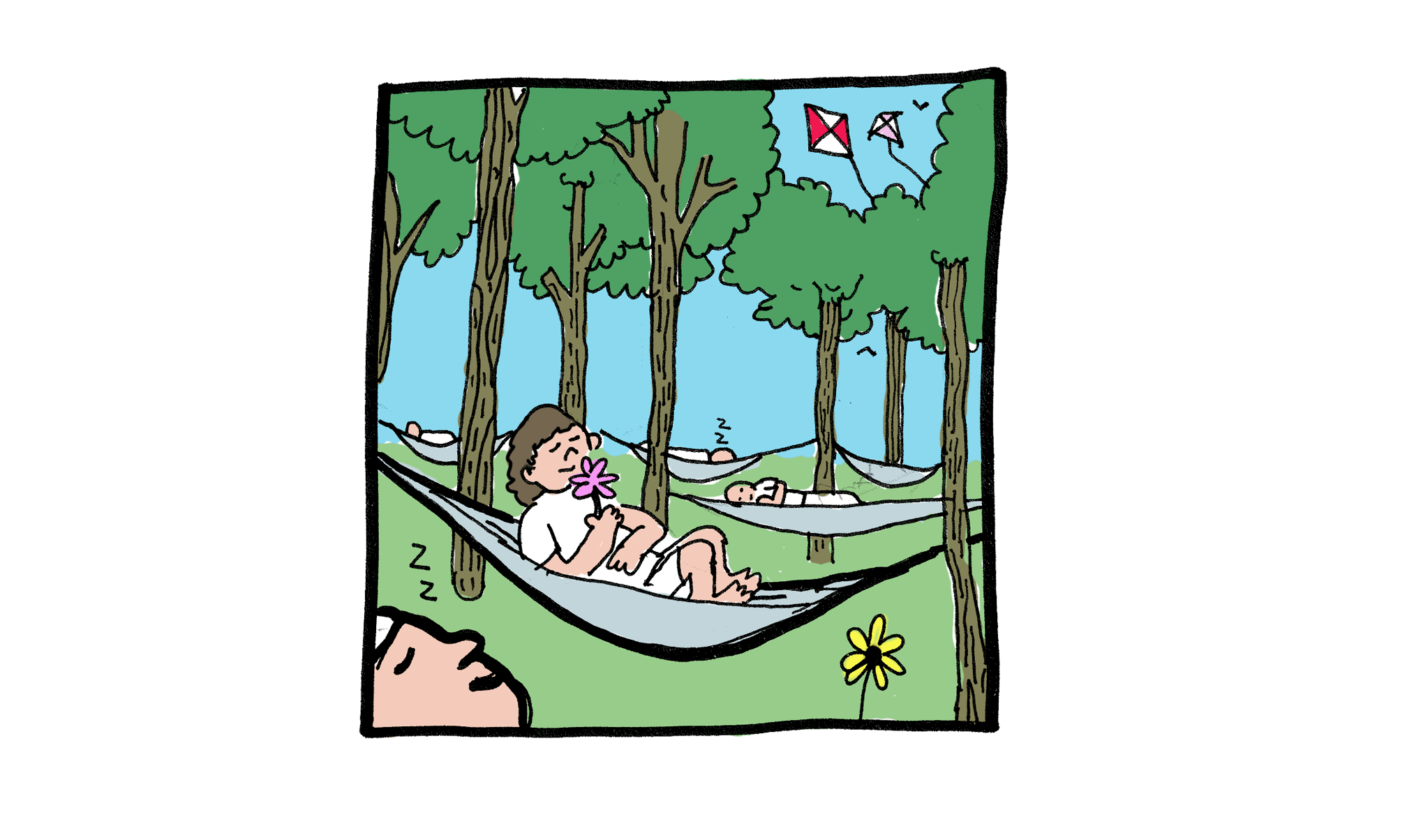
OZE was founded in 1912. The organization was devoted to health, hygiene, and childcare for the Jewish population. TOZ was the Polish branch of OZE, founded in 1921. It became a national organization. Its acronym stood for the Society for the Protection of Jewish Health in Interwar Poland. TOZ sought to provide protection and welfare to Jewish citizens and their children. It did so by promoting hygiene, providing adequate nutrition for infants and children, supplying vaccines against infectious diseases like smallpox, and organizing summer camps. TOZ founded multiple summer camps for approximately 14,000 Jewish children who suffered from poor health due to harsh living conditions in cities and lack of access to nutritious food. In total, OZE opened 13 camps across Poland that hosted 2,500 children. Vilna’s Dr. Tsemah Szabad was a famous doctor, cultural figure, and health activist. He founded a TOZ camp outside of Vilna. Children who attended OZE were brought to camps outside the city where they would have access to fresh air. Common activities at these camps ranged from playing games like ping-pong, to resting and enjoying the clean air on cots or hammocks.
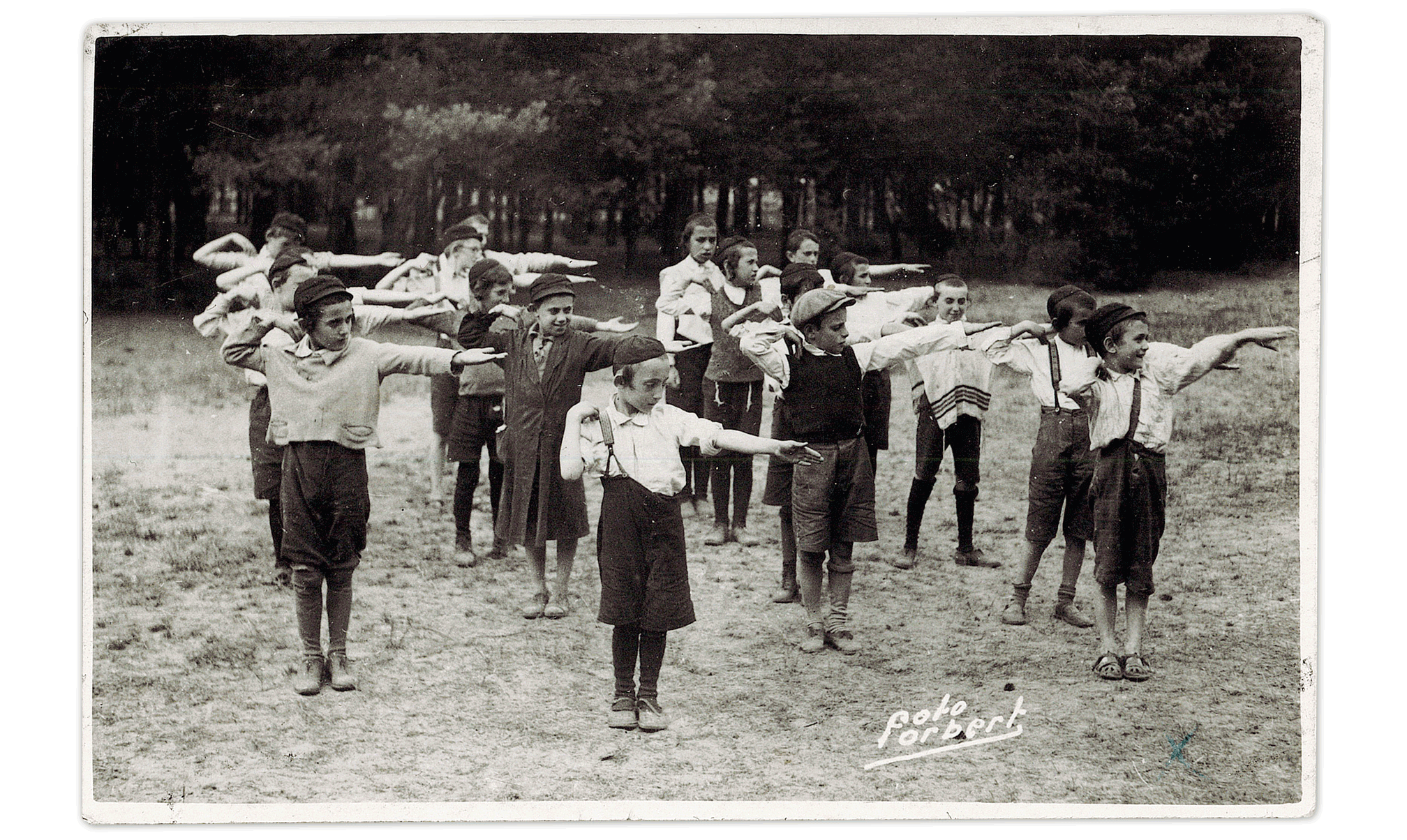
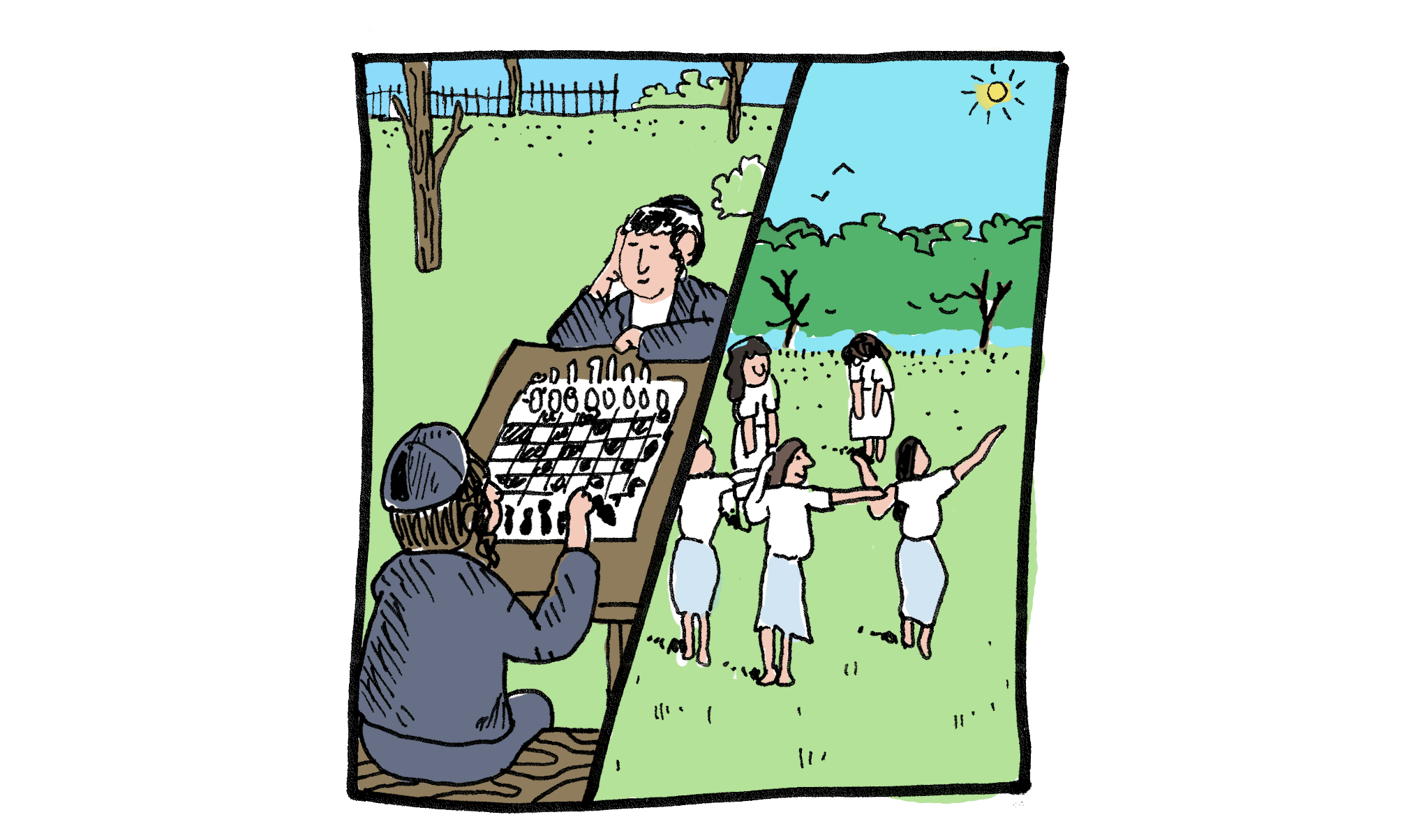
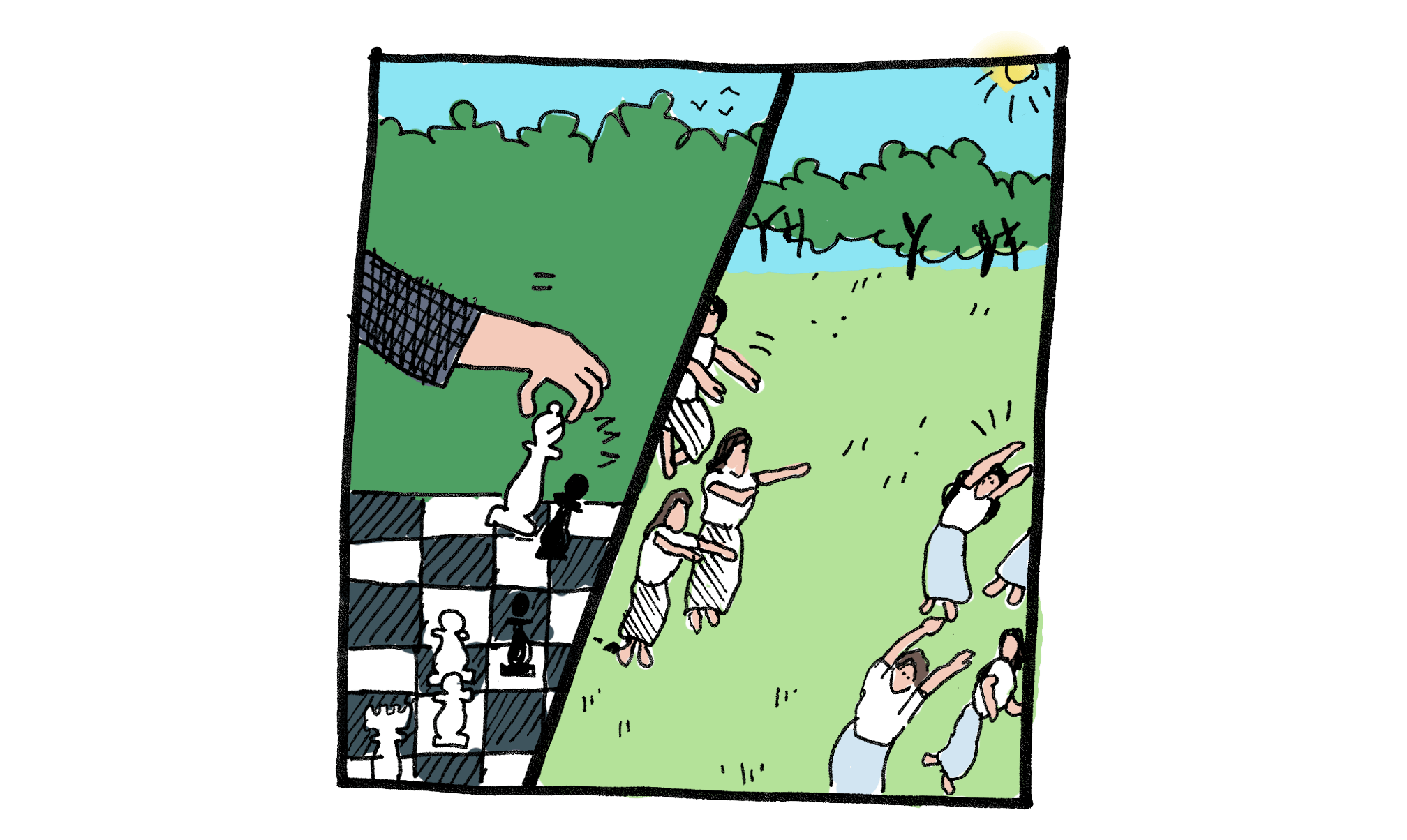
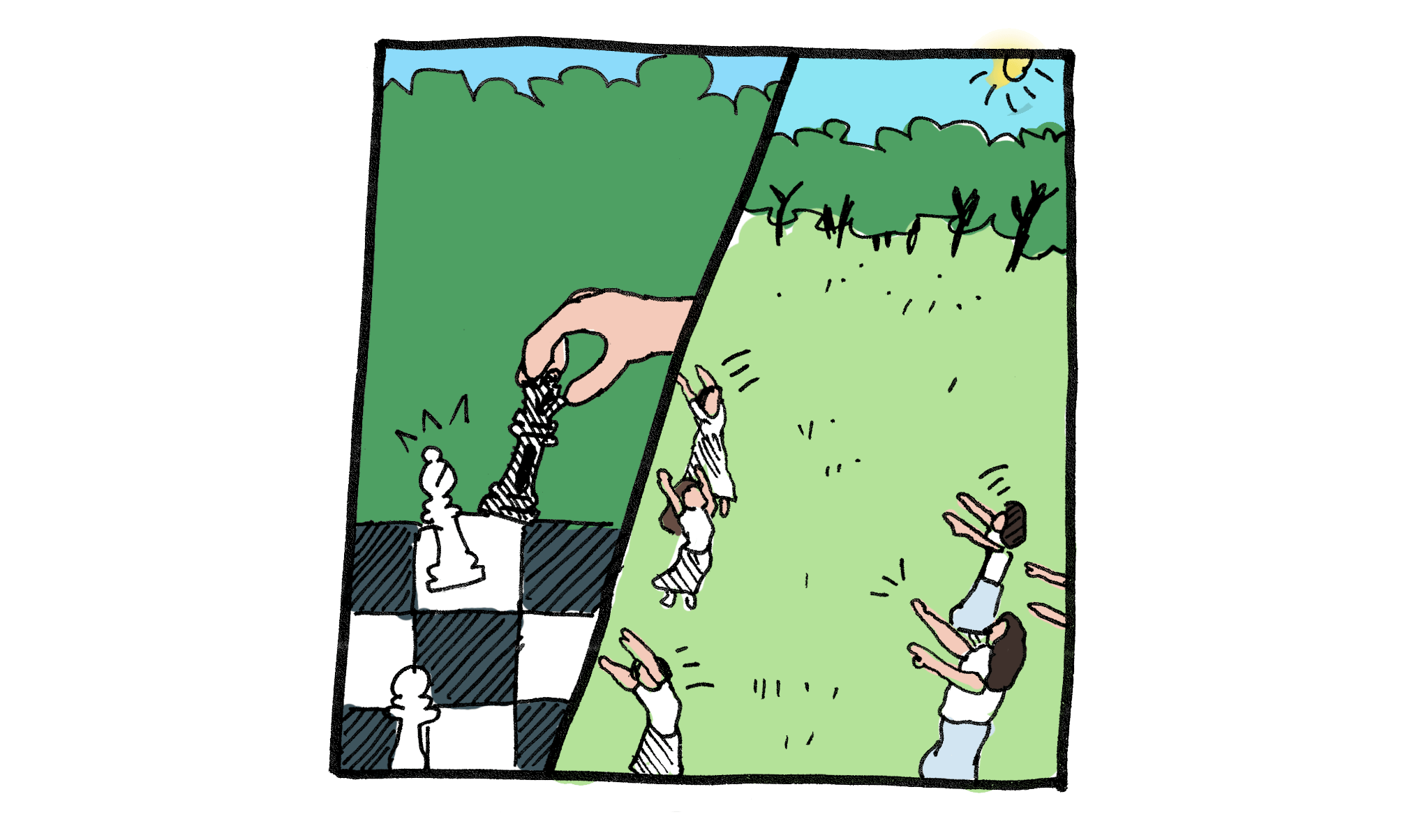
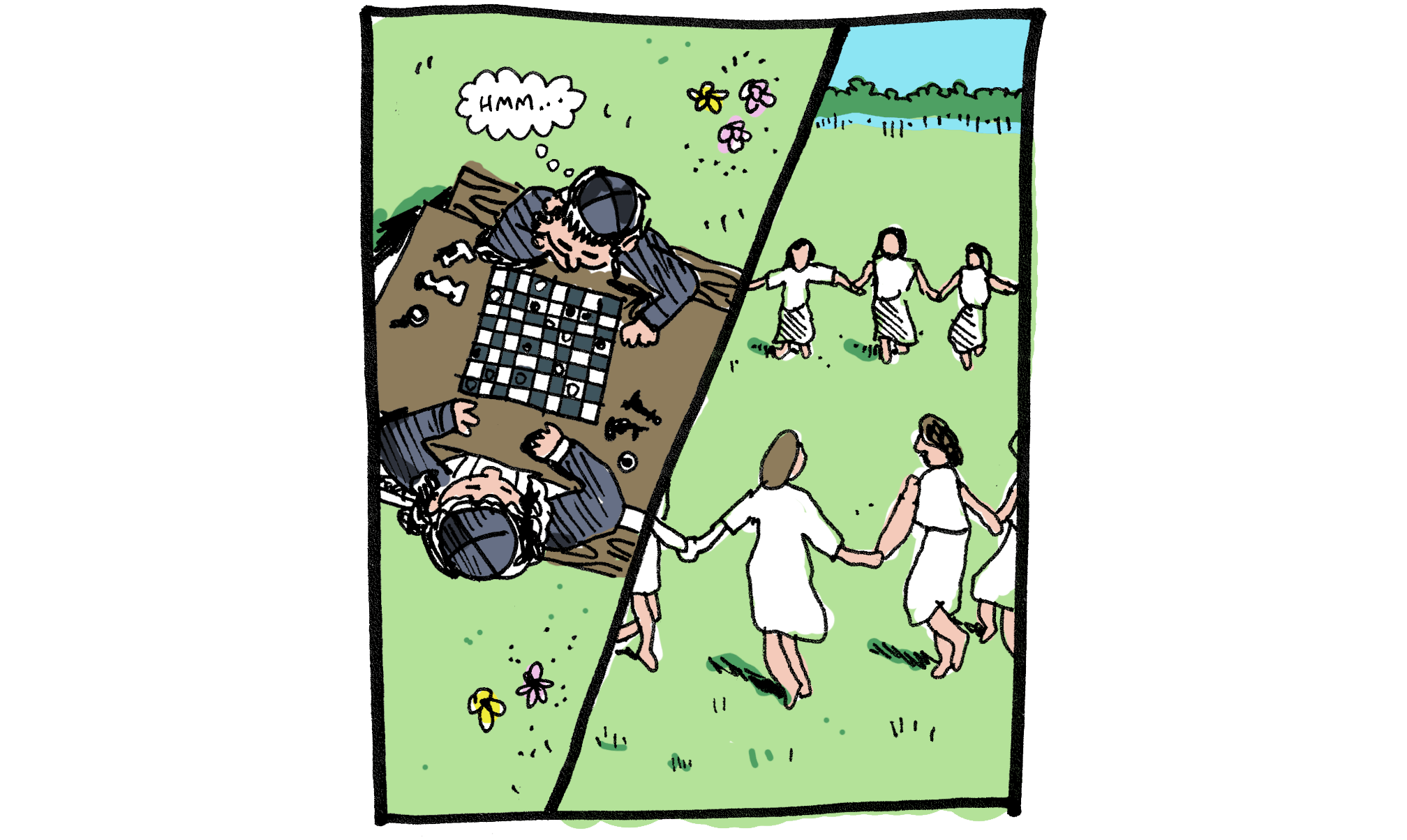
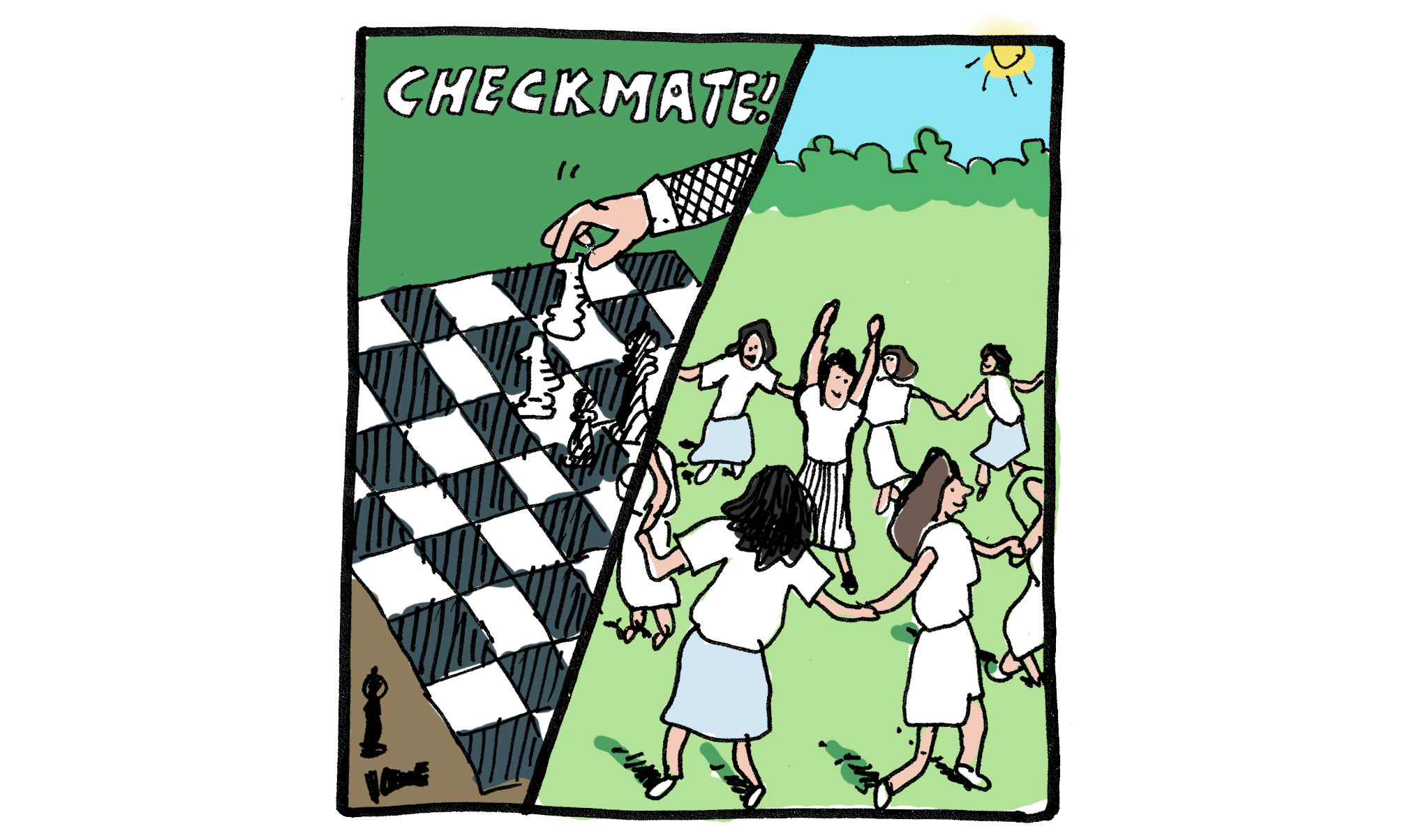
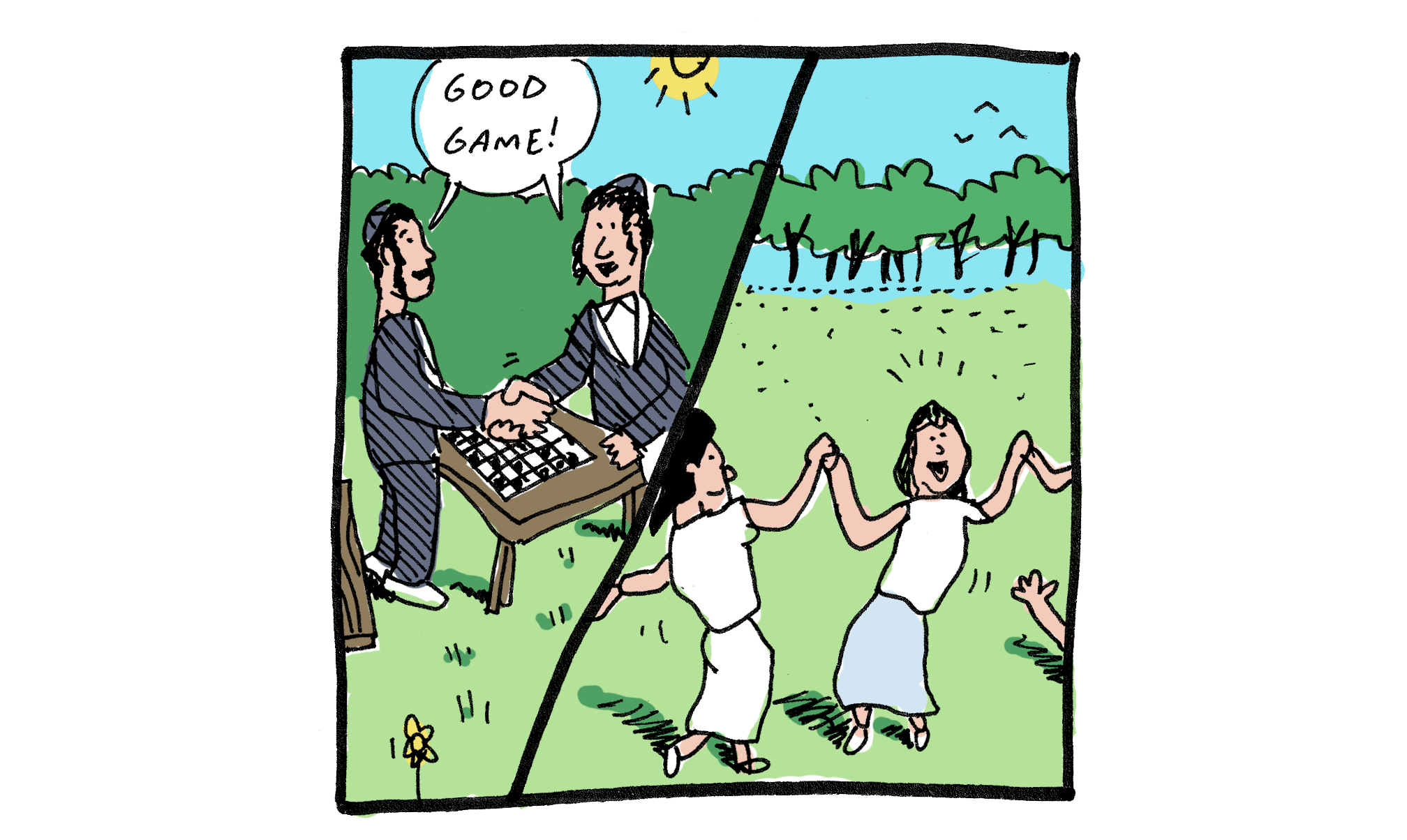
Yehudia was a summer camp for Orthodox Jewish children in Długosiodło, Poland (located just north of Warsaw) during the 1920s and 1930s. Orthodox Jews are defined not only by strict religious observance, but also by the preservation of tradition. Part of their tradition includes a modest dress code and the separation of genders. Although Yehudia’s campers were religious, images reveal that the children at these camps engaged in activities similar to other camps of the time. This included physical education or gymnastic classes, dancing, and playing games. However, because Yehudia was religious in its orientation, children were separated by gender.
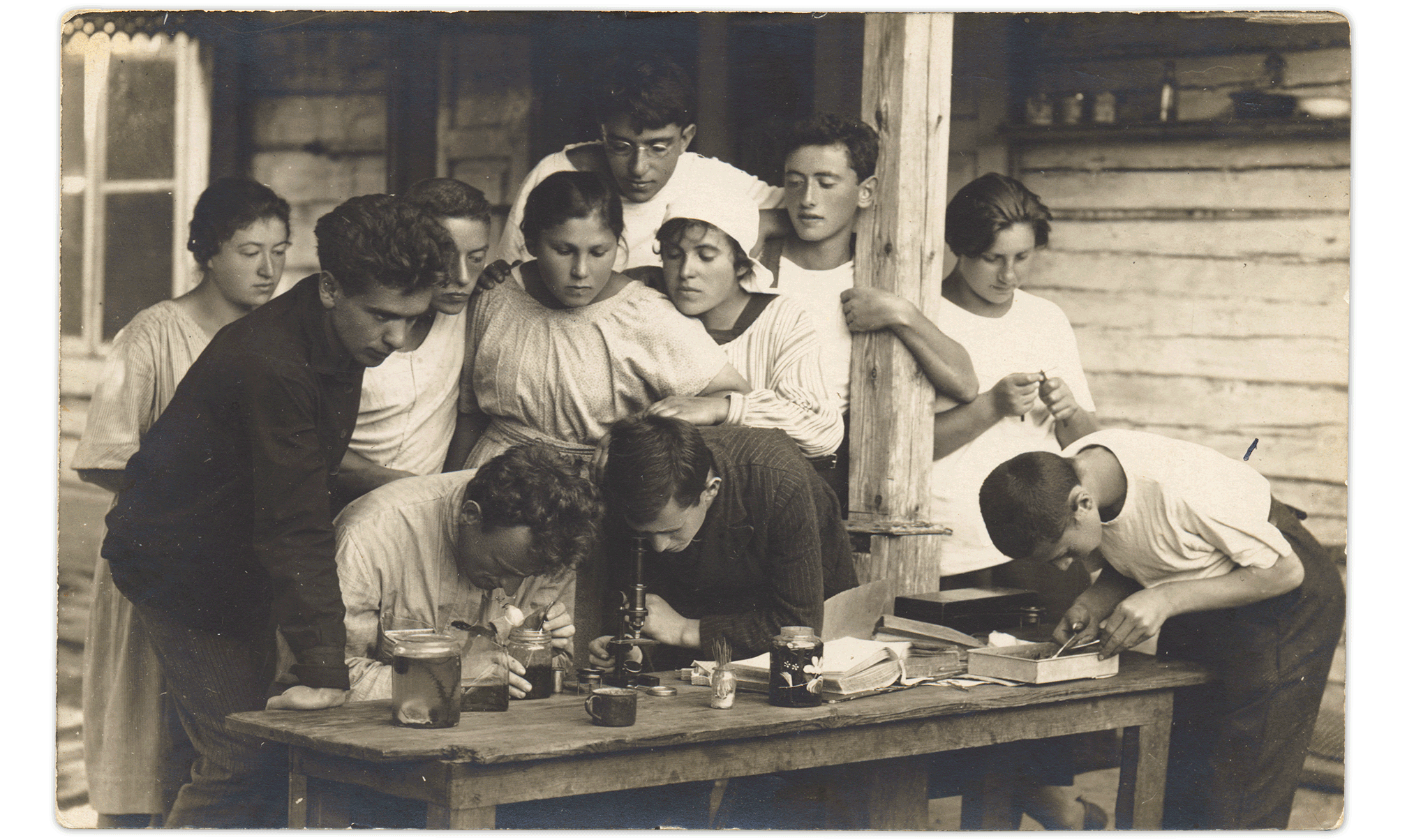
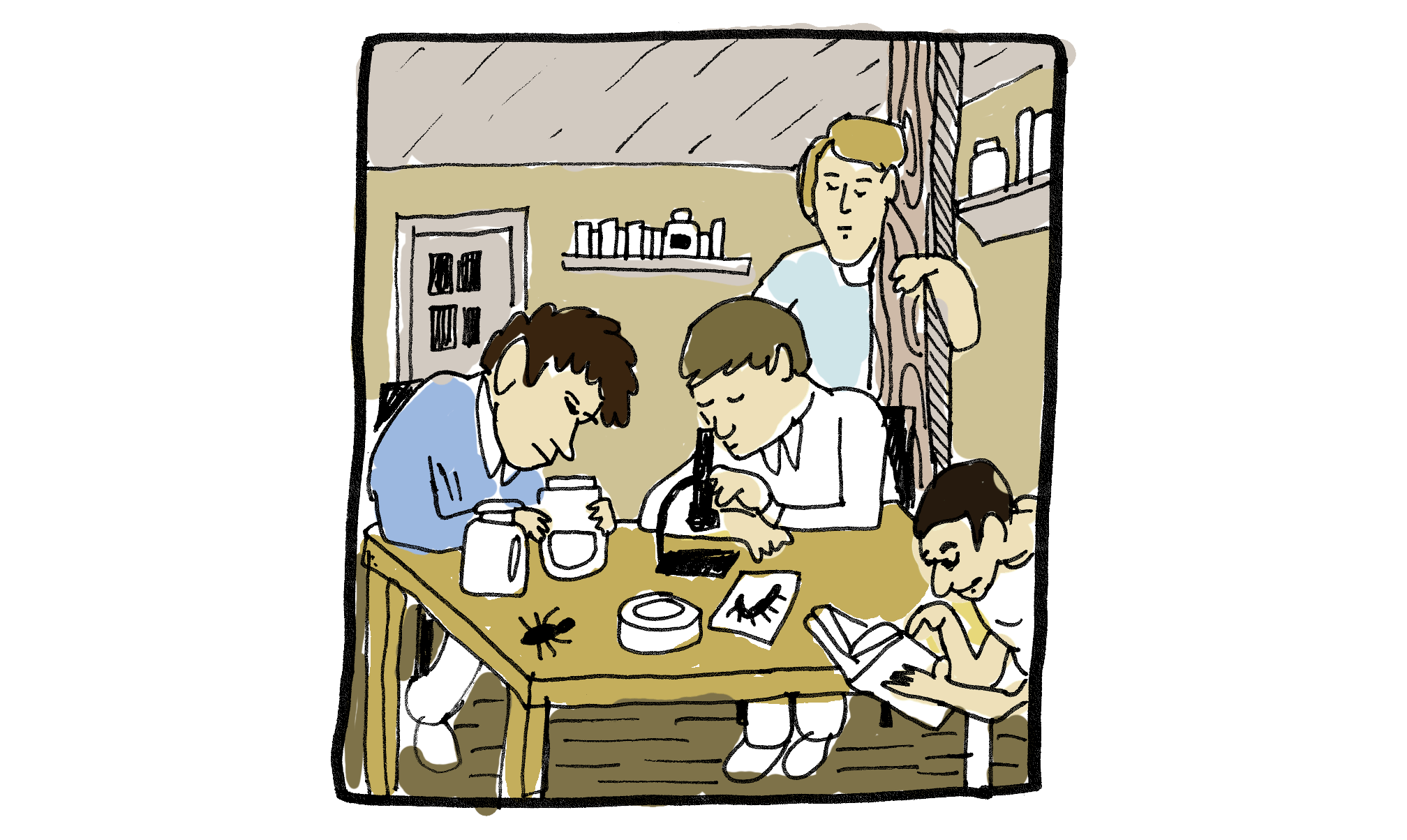
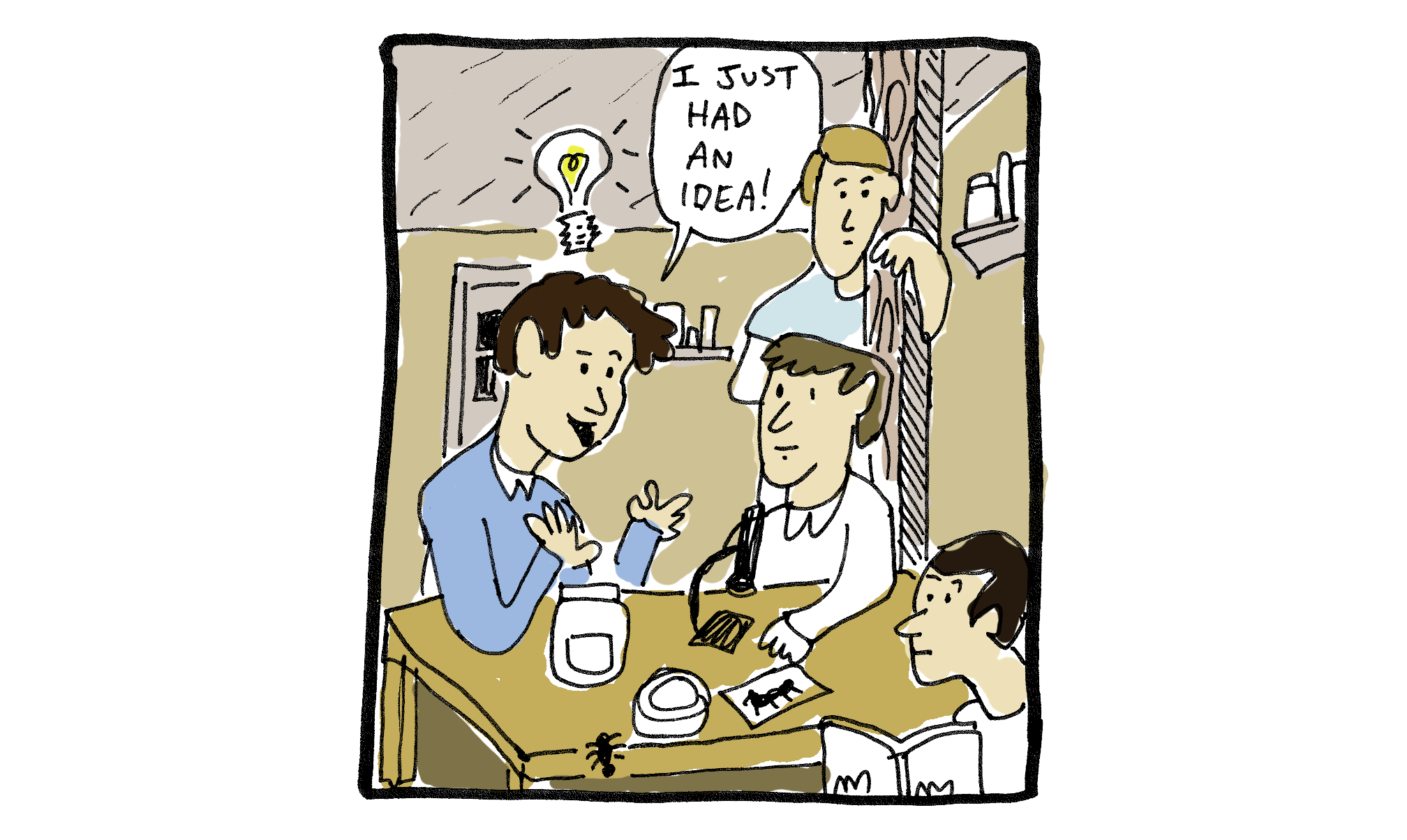
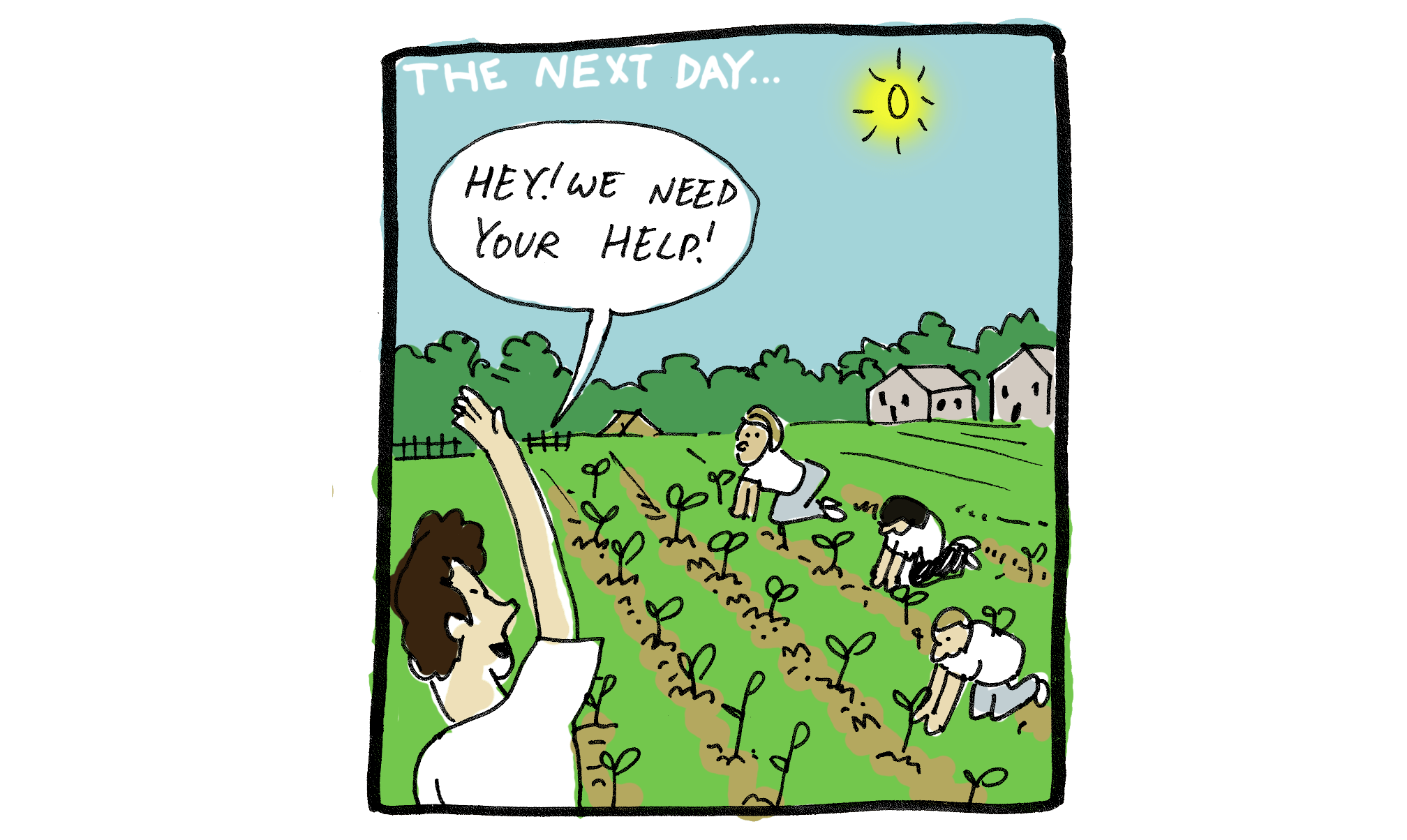
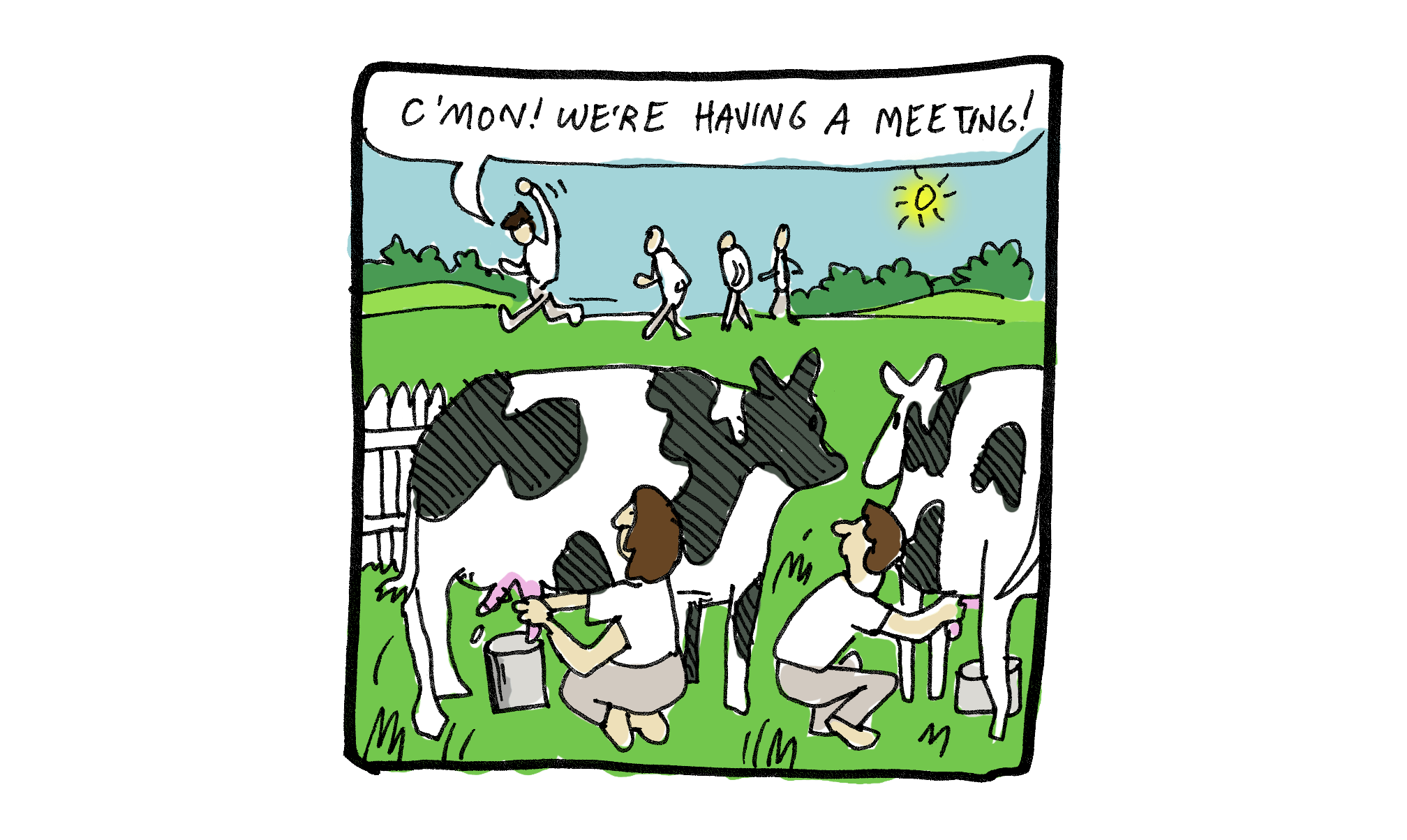
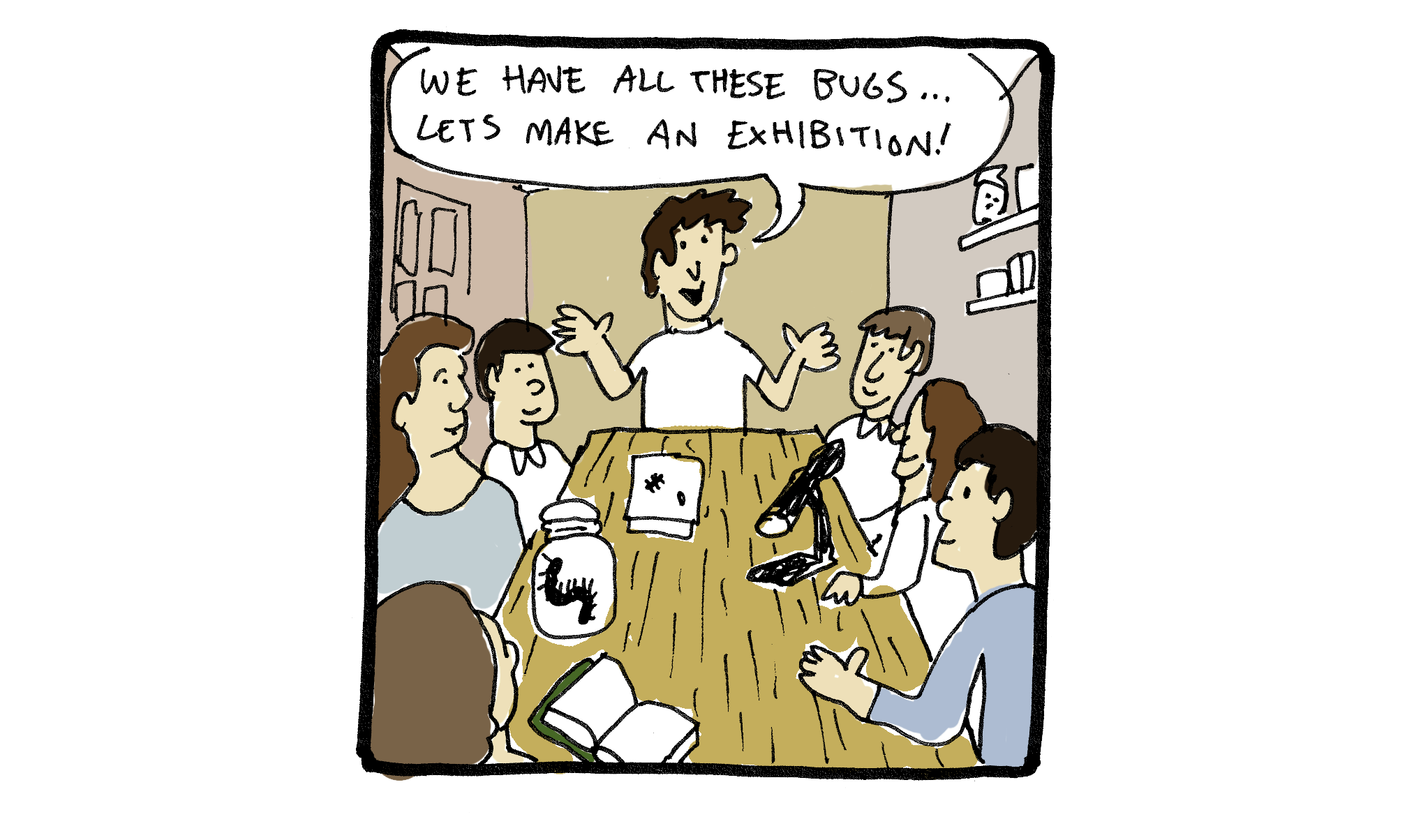
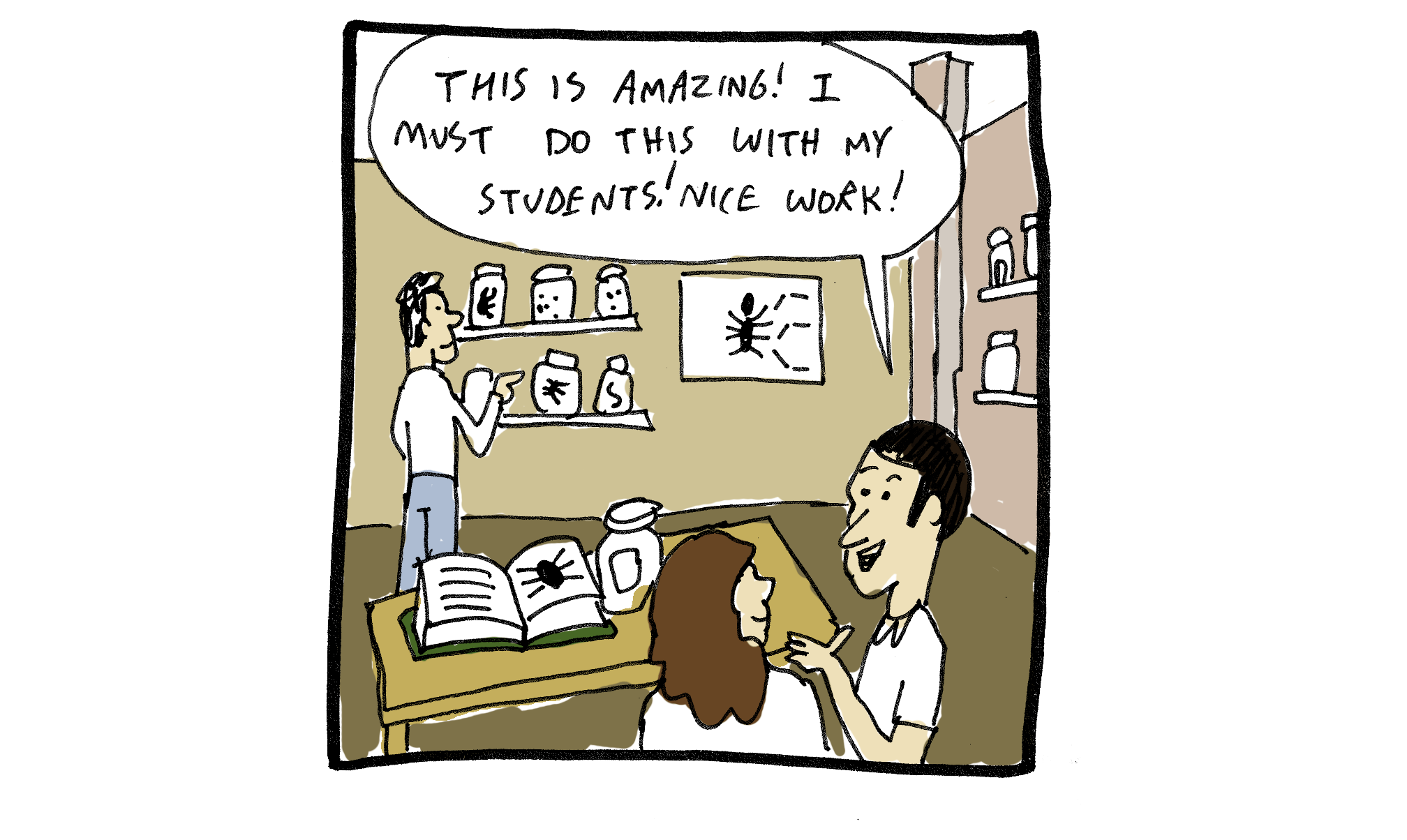
Designed as a teacher training institute, the Vilna Jewish (Yiddish) Teacher’s Seminary operated from 1921 to 1931 under the Vilna branch of the TSYSHO school system. TSYSHO was the Yiddish school system in Poland supported by the Bund Jewish socialist party. That party’s values were secular and socialist. The school provided summer camps for their students. These camps were in areas just outside of Vilna and included Puzkarnia (now Pūčkorių in Lithuania) and Werki (now Verkiai Regional Park in Lithuania). Activities for these students included hiking, swimming, farming, and preparing exhibitions on biology.
